Best Plants For Clay Soil (20+ Perennials You’ll Want In Your Garden)
Navigating the world of gardening with clay soil can often be a daunting task. But with the right plants, this ‘problem' soil can be turned into a flourishing landscape. Here you'll find the best plants for clay soil, their growth habits, and care requirements, as well as some practical tips to create a thriving garden.
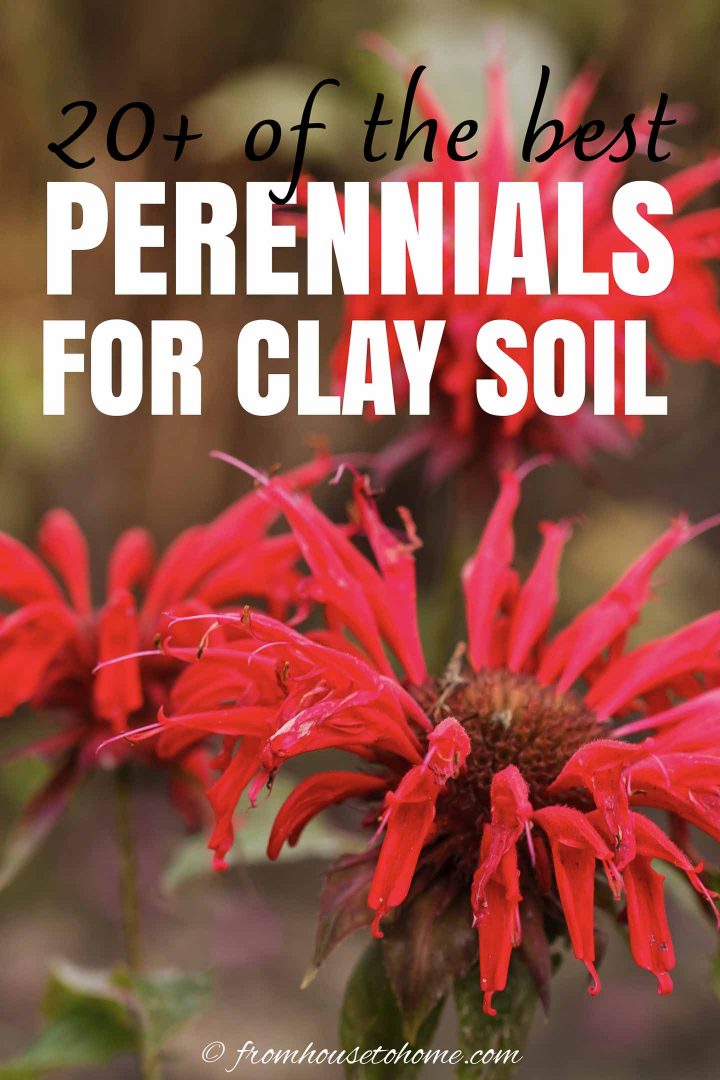
If you garden in an area of the country with heavy clay soil (like the red clay soil we have here in upstate SC), you know how hard it can be.
When the ground is wet, it's so soggy that plant roots rot.
When the soil is dry, it's hard as a brick and nothing will grow in it.
Well, I have good news…with the right plants and a few easy gardening tips, it is possible to grow a thriving garden in those tough conditions!
Before we get to the plants, let's talk about the tips:
- When you have clay soil, it is really important to amend the soil before you plant anything. Adding some compost or triple mix will go a long way to getting proper drainage.
- Don't walk on your garden beds when they're wet. That will cause the clay to get compacted which will make the issues even worse.
- Water for longer periods of time less often. It takes water longer to soak into clay soil but it also takes longer to dry out.
Okay, now let's get on to the fun stuff…my favorite plants for clay soil.
1 | Bee Balm (Monarda)
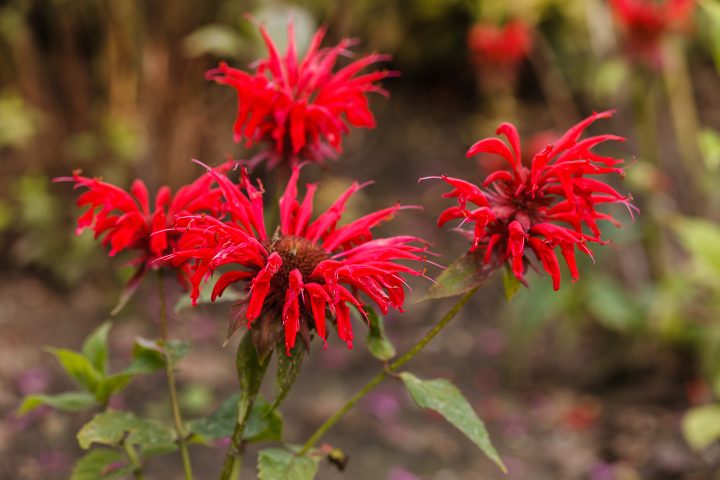
Zones: 3 - 9
Light: Sun to Part Shade
Bloom Time: Summer
Height: 15" to 48"
Spread: 18" to 48"
Bee Balm (Monarda) is a perennial with brightly colored red, pink or purple flowers that are made up of little tubes. Which are perfect for hummingbirds and butterflies to drink from. (And as the name suggests, bees like it too).
Monarda is a member of the mint family.
This means it can spread pretty quickly so plant it in an area where it has some room to grow. It also means that it grows well even in tough conditions like clay soil.
Because of its herb heritage, Bee Balm is drought-tolerant, and its strong scent deters rabbits and deer.
2 | Black-eyed Susan (Rudbeckia)
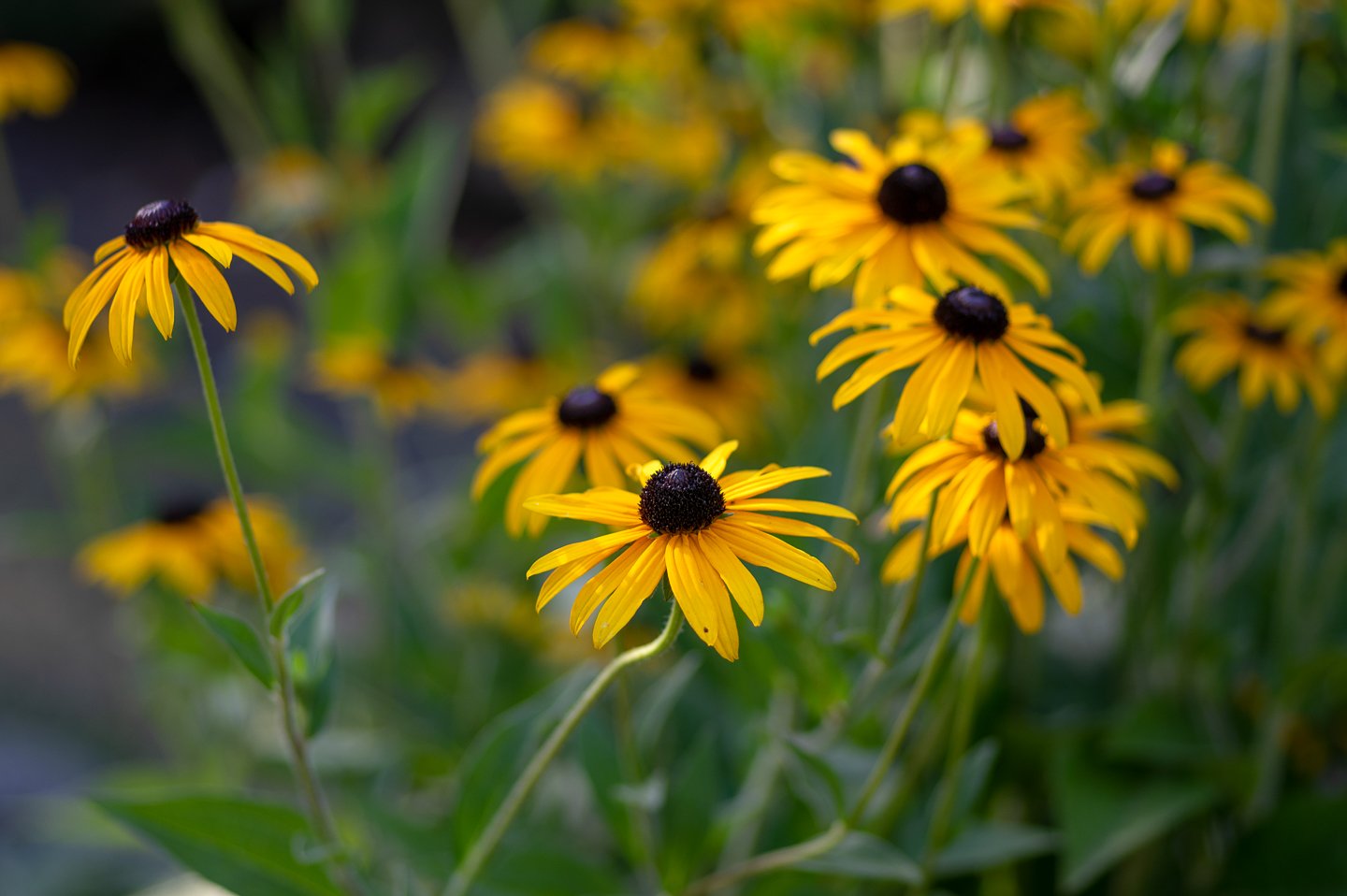
Zones: 4 to 9
Light: Sun
Bloom Time: Late spring to early fall
Height: 1' to 3' (depending on the variety)
Spread: 1' to 2'
Black-eyed Susan is a native perennial that produces daisy-like yellow or orange flowers from late spring until early fall.
Deadheading old flowers will encourage re-blooming.
Those brightly-colored flowers are a magnet for butterflies but not for deer. So that's always a bonus!
It can survive in clay soil and is quite drought- and heat-tolerant once it is established.
Some varieties are considered annuals so check the description of the plants when you buy them.
Also, Rudbeckia can be a prolific self-seeder. If you don't want to grow (or pull) lots of new seedlings, it's a good idea to remove the old flowers before they have a chance to go to seed.
3 | Bugleweed (Ajuga reptans)
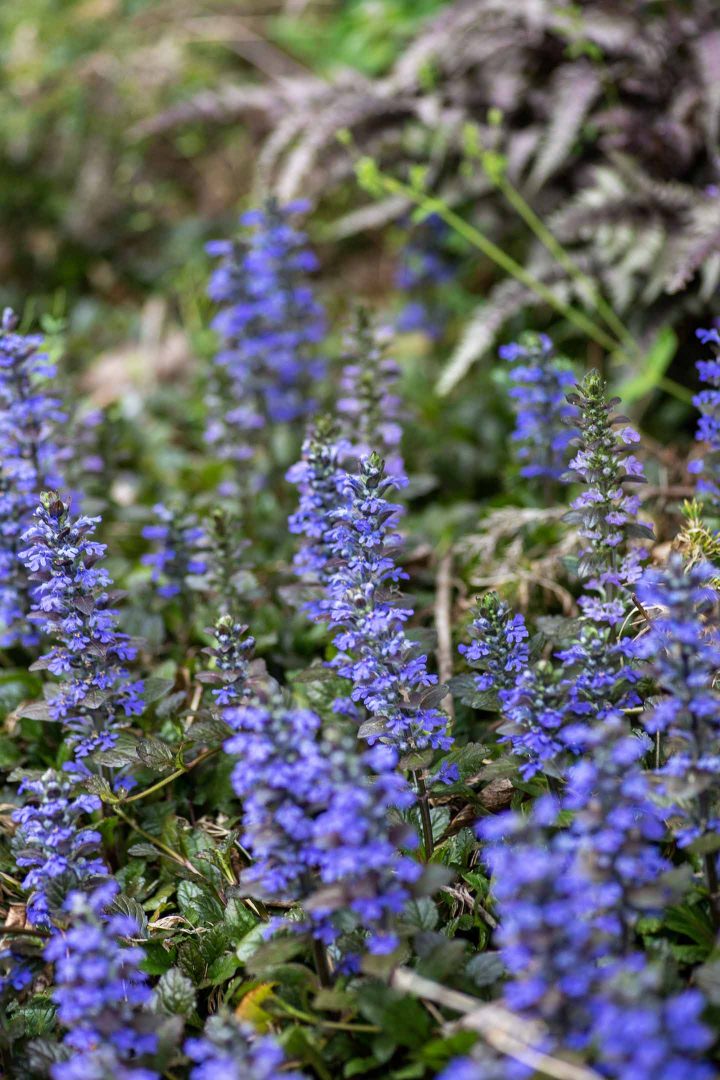
Zones: 4 to 10
Light: Shade to Sun
Bloom Time: Spring
Height: 6" to 12"
Spread: 12" to 48"
Bugleweed will form a dense, evergreen mat of shiny, dark green leaves with spikes of violet-blue flowers that makes a great groundcover.
There is also a variety available with purple flowers and burgundy leaves that is quite pretty.
This shade-loving perennial spreads by underground runners called stollens as well as by self-seeding. (Cut off the spent flowers to prevent the latter.)
Give careful consideration to where you plant it because it will creep into lawns and can be difficult to eradicate.
However, it is useful under trees where grass will not grow (it is one of the few plants that will survive under a black walnut tree).
It also tolerates dry shade and is deer resistant.
4 | Coneflower (Echinacea)
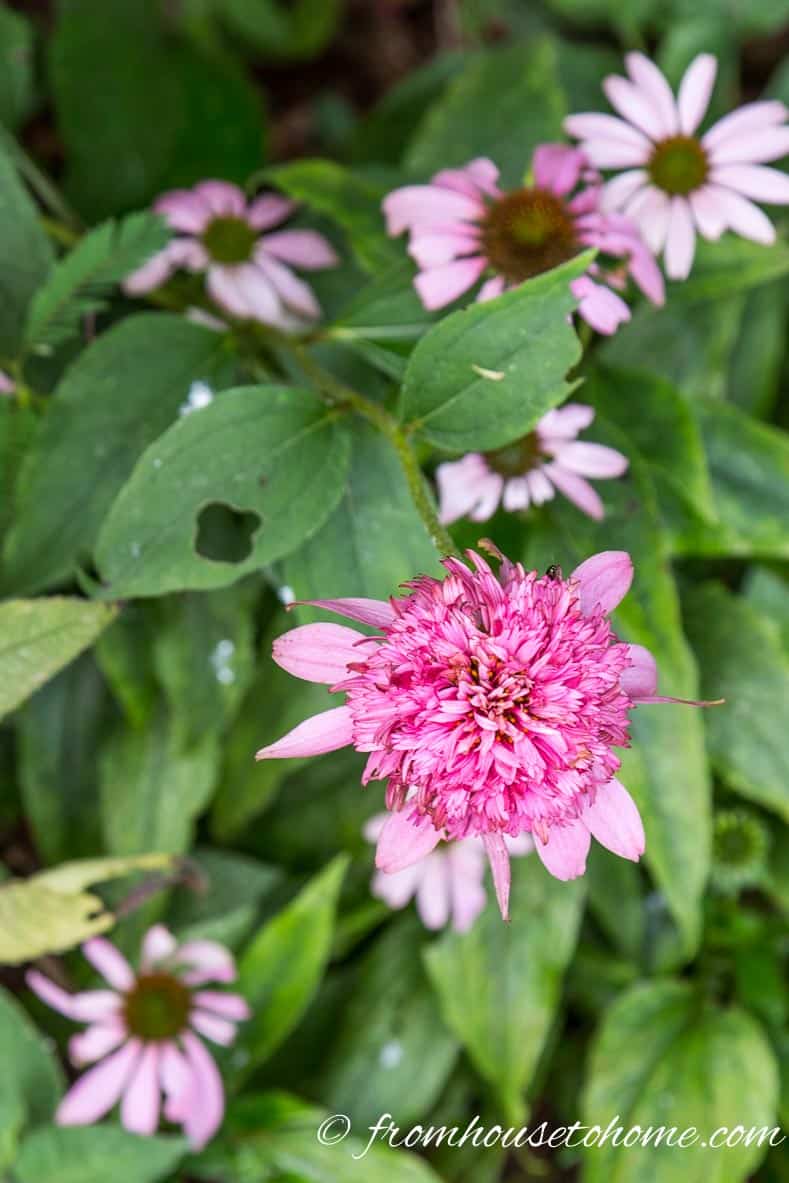
Zones: 3 - 9
Light: Sun
Bloom Time: Summer
Height: 24" to 48"
Spread: 24" to 36"
Coneflower (Echinacea) is an easy-to-grow perennial that thrives in full sun and blooms all summer long which may be why so many gardeners love it.
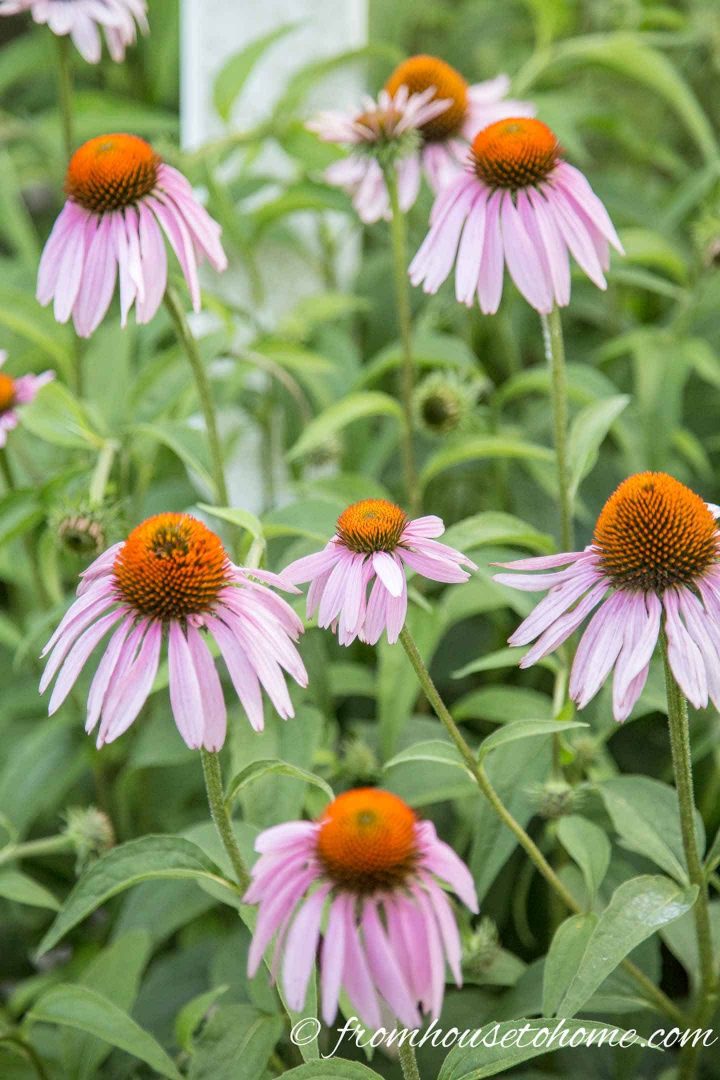
They are heat- and drought-tolerant, attract bees, butterflies and hummingbirds and will grow in pretty much any soil conditions.
Deer will leave them alone, unless they are really hungry. Although the rabbits seem to like them.
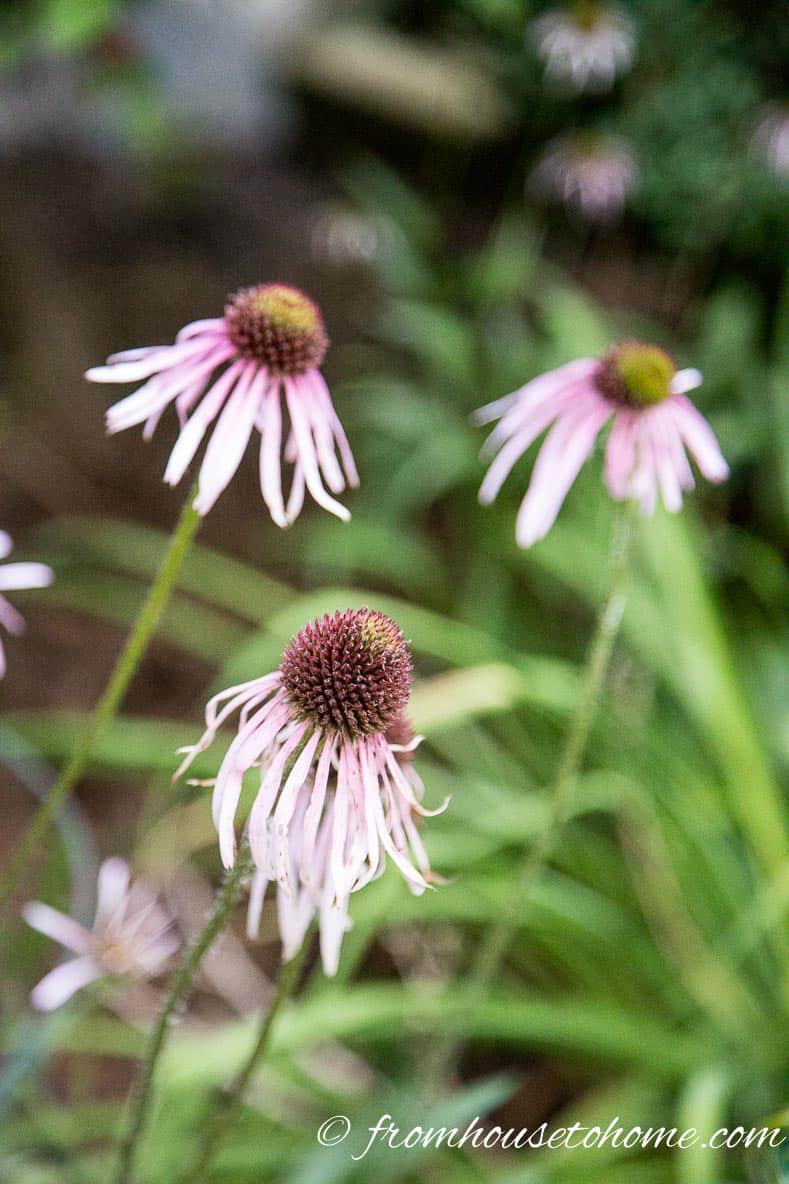
There are so many different colors and flower forms that you are sure to find one (or more) that you like.
While Coneflower is usually listed as a summer-blooming plant, I am always able to get a second round of flowers in the fall by chopping the plants off after the first round of blooms is finished. They are usually looking pretty scraggly at that point anyway, so the pruning makes the garden look better, too!
One note: Echinacea do tend to self seed. So you may need to pull out a few plants if you find them growing where you don't want them.
5 | Coral Bells (Heuchera)
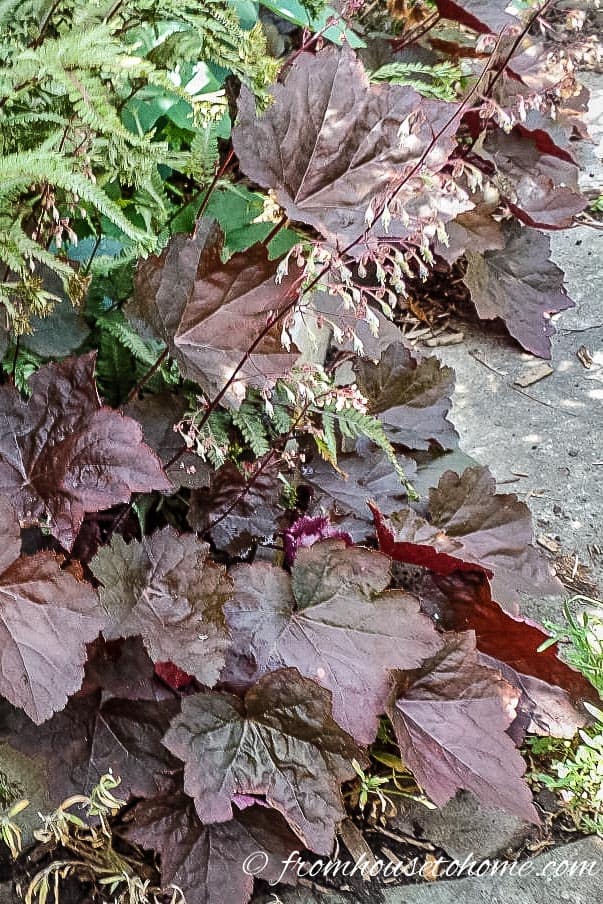
Zones: 4 to 9
Light: Shade to Part Shade
Bloom Time: Spring
Height: 6" to 18"
Spread: 12" to 30"
Commonly called Coral Bells, Heuchera foliage provides great color in the shade garden.
The leaves come in a range of hues from almost black, dark purple, chartreuse, peach and orange and have an interesting lobed shape.
It does not like to be planted too deep, so set the crown at ground level.
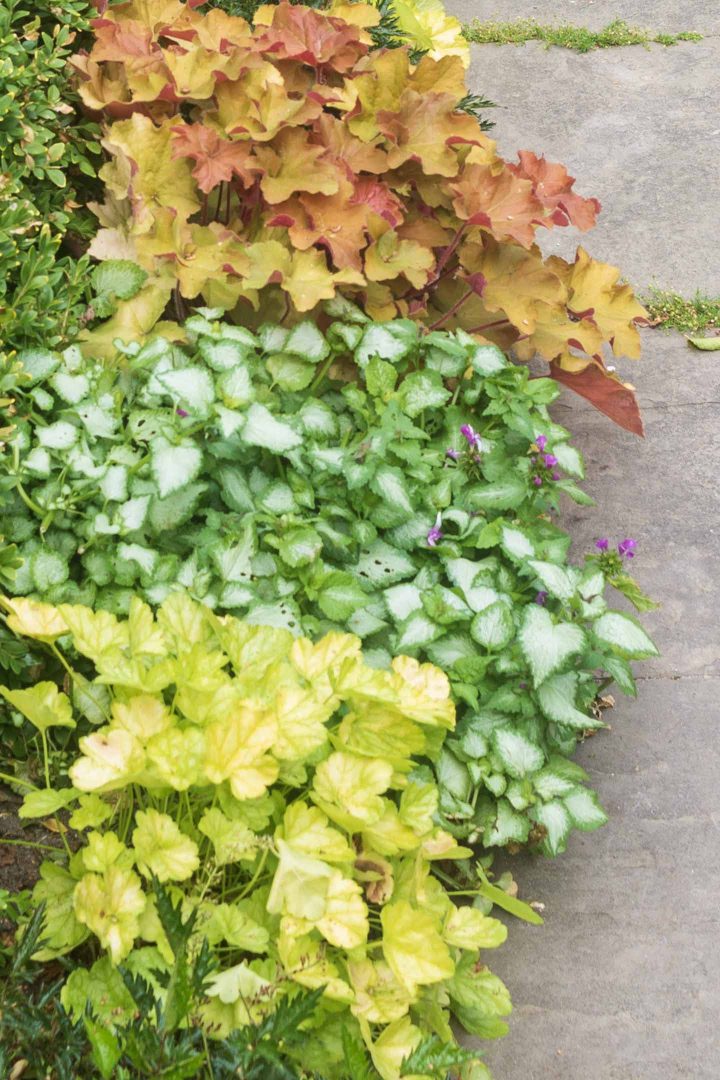
This plant does have insignificant little flowers, but it is mainly grown for its beautiful foliage, like these yellow and orange varieties grown with Lamium in the middle.
It was named Plant of the Year in 2012.
6 | Daylily (Hemerocallis)
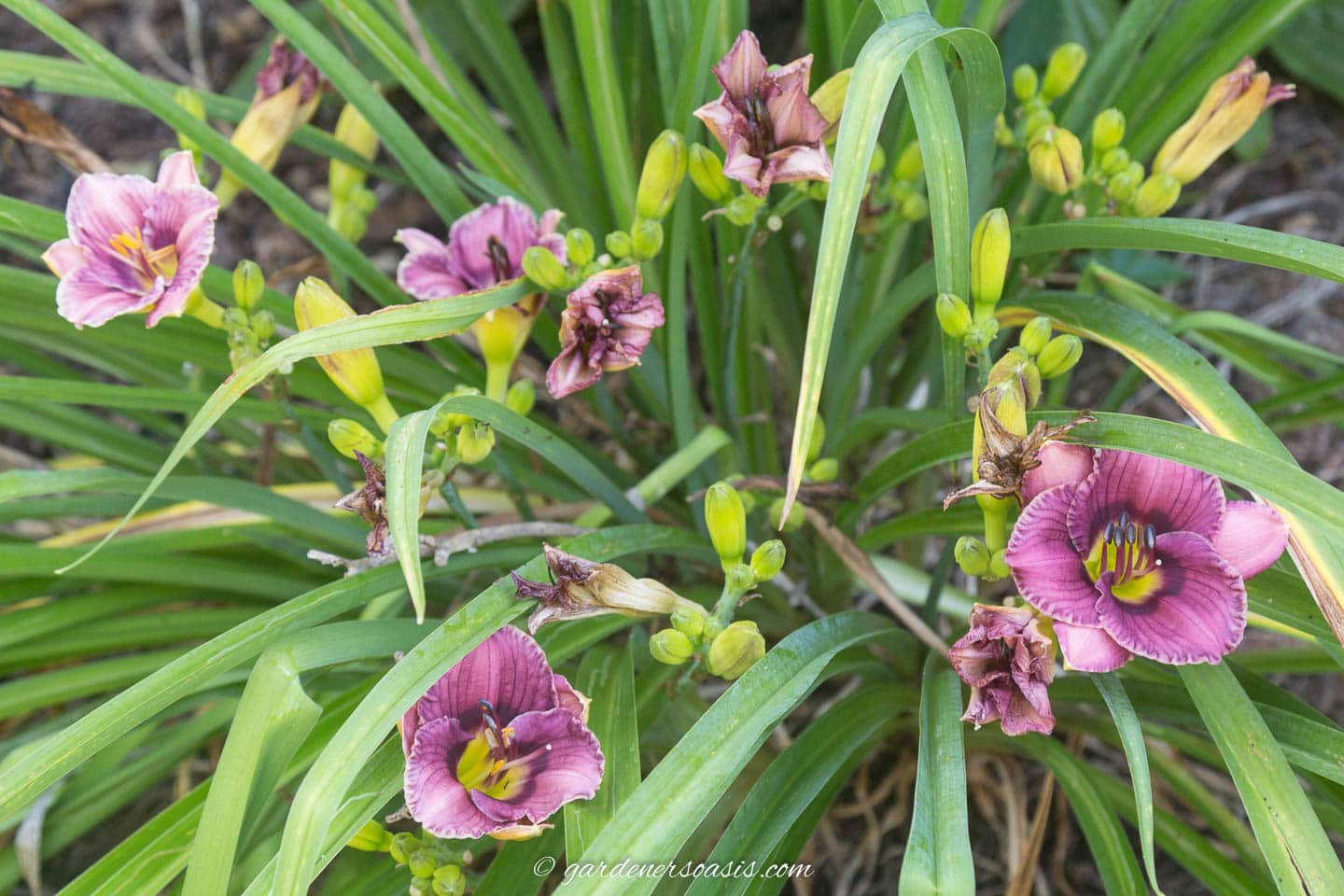
Zone: 3 to 9
Exposure: Sun to part shade
Height: 12" to 36"
Width: 24" to 36"
Bloom time: Late spring to summer
Flower color: pink, purple, red, yellow
Daylilies (Hemerocallis) really are a "plant and forget" flower which is why they are one of my favorite full sun perennials.
As the name suggests, each bloom only lasts a day. But as you can see, one plant can grow a lot of buds!
They come in many different plant sizes and flower colors. But generally bloom in late spring and summer.
Different varieties have different bloom times, so you can get a longer flowering period in your garden by selecting them to bloom one after the other.
Some of the newer varieties also re-bloom. Make sure to remove old flowers to encourage new ones in these plants.
Hemerocallis is heat- and drought-tolerant, attracts butterflies and hummingbirds, and rabbits usually avoid them. They are a favorite of deer, however.
7 | English Primrose (Primula vulgaris)
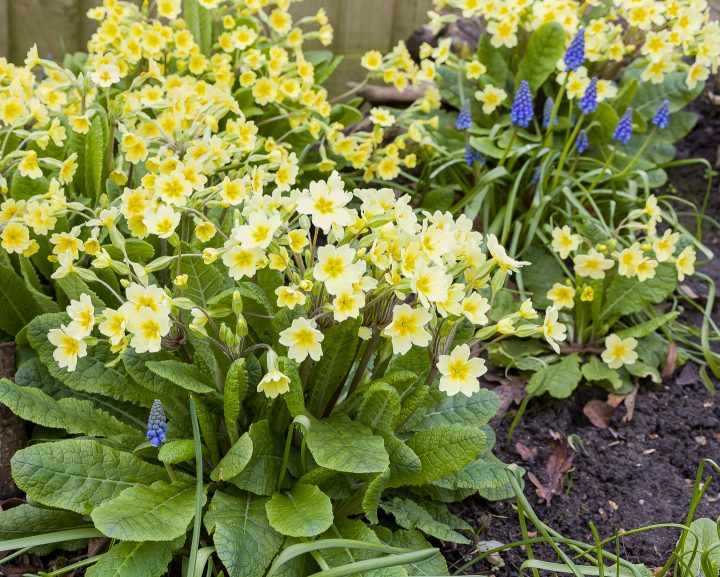
Zones: 4 to 8
Light: Part Shade
Height: 4" to 6"
Spread: 4" to 9"
Bloom Time: Late Winter to Early Spring
Flower Color: Yellow
English primrose (Primula vulgaris) is a compact, semi-evergreen plant with small pale yellow, scented flowers that appear from late winter to early spring.
This European native plant loves part shade but will tolerate full sun in cooler regions.
It self-seeds so plant it where it can naturalize and you'll be rewarded with a sunny show of flowers before most other plants have started to grow.
It goes dormant in the summer so be sure to locate it where other plants will cover the empty spots.
English primrose is such a joy to have in the garden that it received the prestigious Award of Garden Merit from the Royal Horticultural Society.
8 | False Goat's Beard (Astilbe)
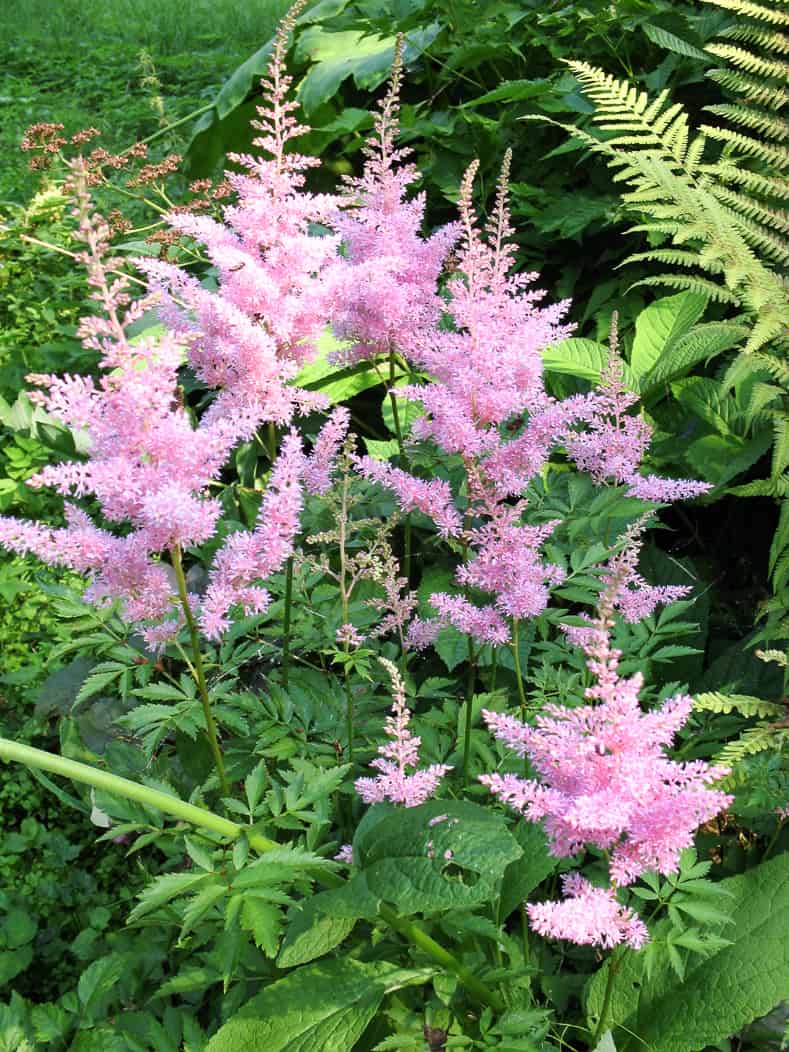
Zones: 3 to 9
Light: Part Shade or Sun (depending on the variety)
Bloom Time: Summer
Height: 6" to 60" (depending on the variety)
Spread: 12" to 36"
Planting Astilbe is a great way to add some color to your shade garden.
With their pretty pink, white, lavender or red plumes that bloom above fern-like foliage in the summer, they definitely make a statement.
Plant them in moist but well-drained soil and water deeply once a week to keep them happy.
Make sure to check the light requirements for the plants you are buying, since some varieties prefer shade while others want more sun.
9 | Ferns
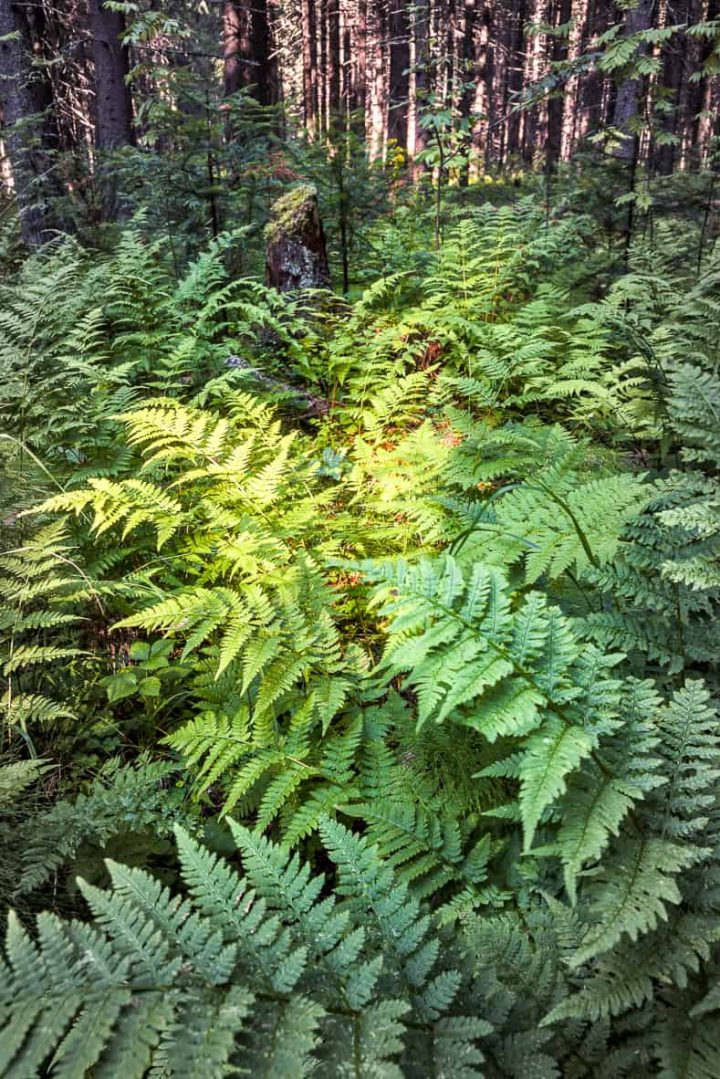
Zones: 2 to 11
Light: Shade to Part Shade
Bloom Time: Foliage Only
Height: 6" to 6' (depending on the variety)
Spread: 12" to 5'
From miniature 6" plants to large 6 foot giants, there are so many varieties of ferns that you are sure to find some that will thrive in your garden.
Better yet, many of these are native varieties which are really easy to grow since they are so well adapted to the climate.
While most ferns prefer shaded areas, you can also find some that grow in full sun.
The one thing that they all have in common? They need consistent moisture.
So check your local nurseries to find the ferns that suit your situation the best.
Find some of the best native fern varieties HERE.
10 | Glory of the Snow (Chinodoxa)
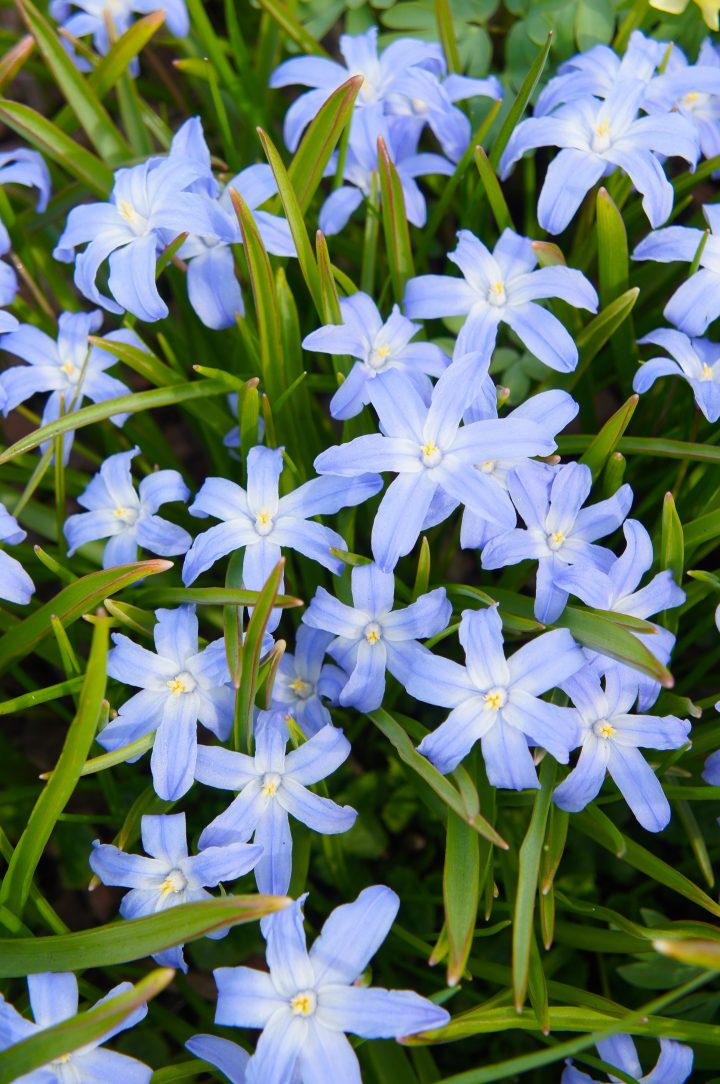
Zones: 2 to 8
Light: Full Sun / Part Shade / Shade
Height: 6" to 8"
Spread: 2" to 3"
Bloom Time: Early Spring
Flower Color: Blue, pink, white
As the name suggests, Glory of the Snow is another one of the spring-flowering bulbs that blooms in late winter or very early in the spring and often comes up through the snow.
It sports pink, blue or white blooms that are deer-resistant and can naturalize into a carpet of flowers.
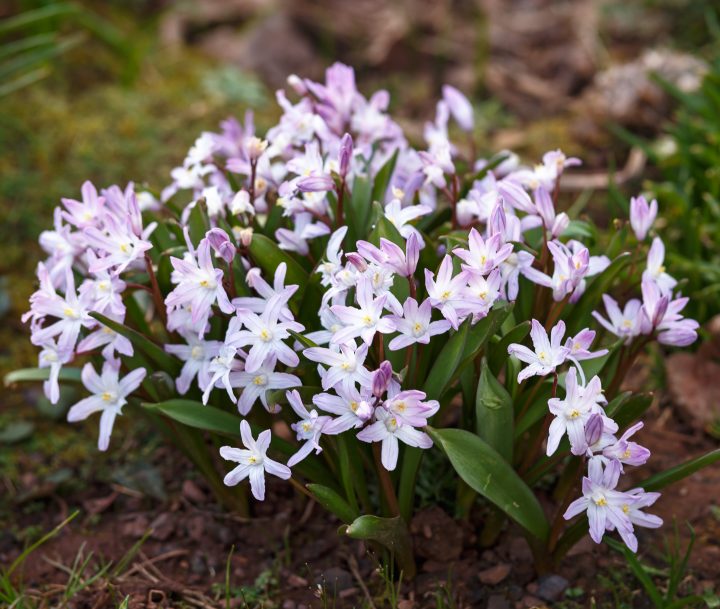
Plant Chionodoxa bulbs 3" deep and 2" to 3" apart.
These plants are poisonous so be careful where you plant them if you have pets or kids that may try to eat them.
11 | Goat's Beard
Zones: 3 to 9
Light: Shade to Sun
Bloom Time: Late spring / Early summer
Height: 30" to 60"
Spread: 40" to 48"
Goat's Beard is a tall native perennial that thrives in the shade and looks a lot like Astilbe.
It has creamy white lacy blossoms that float above delicate serrated dark green foliage on a hardy plant which thrives in part shade.
Goat's Beard can take a couple of years to get going in your garden. But once it is established, it is easy to care for and covers the plant in blooms every year.
This perennial comes in a male and a female version, with the male plants having showier flowers. Most aren't labelled as such, so it helps to buy them when they're blooming to get the kind you want.
Try to plant it in its "forever home" as this perennial doesn't like to be moved.
12 | Hosta
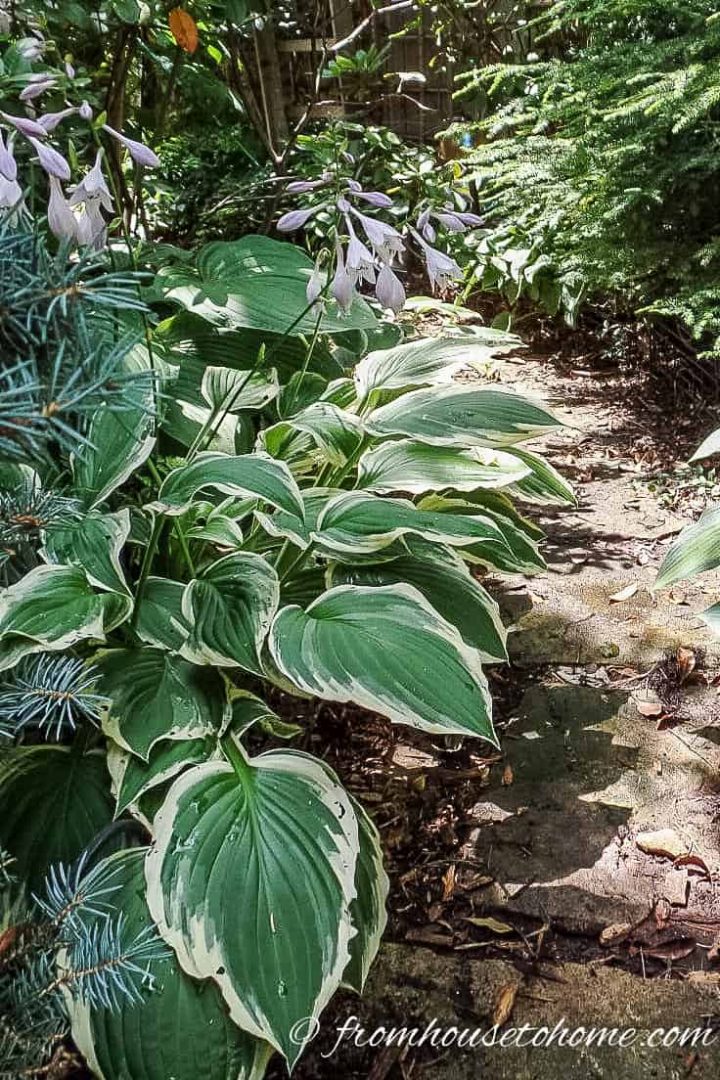
Zones: 3 to 9
Light: Shade To Part Shade
Bloom Time: Summer
Height: 6" to 6' (depending on the variety)
Spread: 12" to 6' (depending on the variety)
Hostas are an old standby perennial ground cover that is available in a large variety of leaf colors and plant sizes.
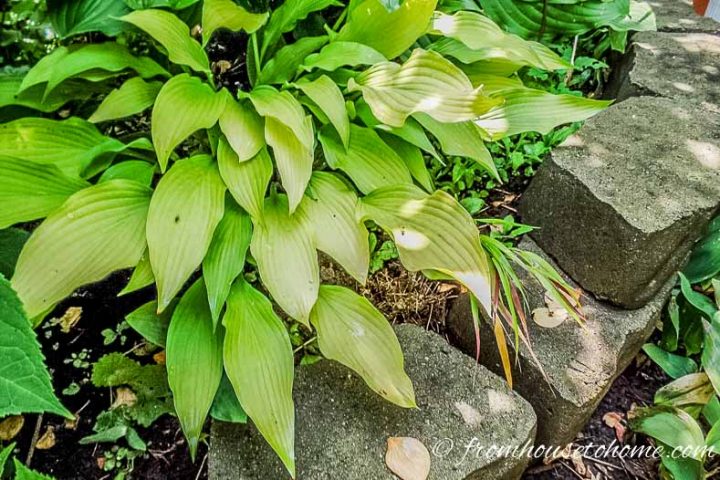
I like to put those varieties that have cream, white, or lime green leaves in the darkest spots of my shade garden so that they pop, particularly at night.
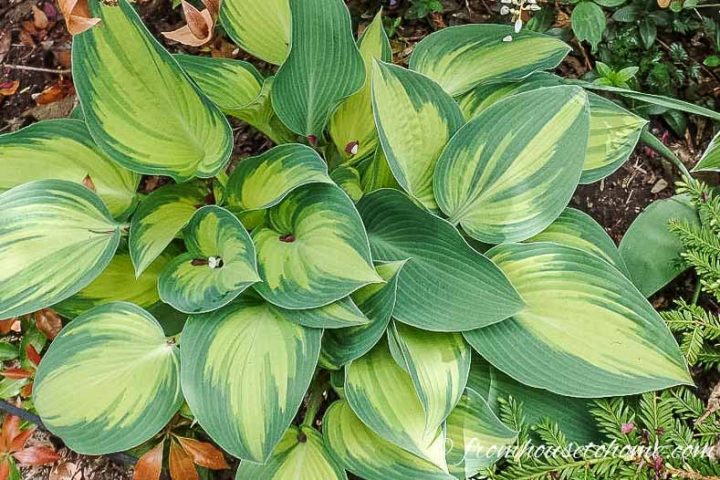
I have a particular fondness for the tough, leathery or waxy leaved hostas because they repel slugs and maintain neat mounds.
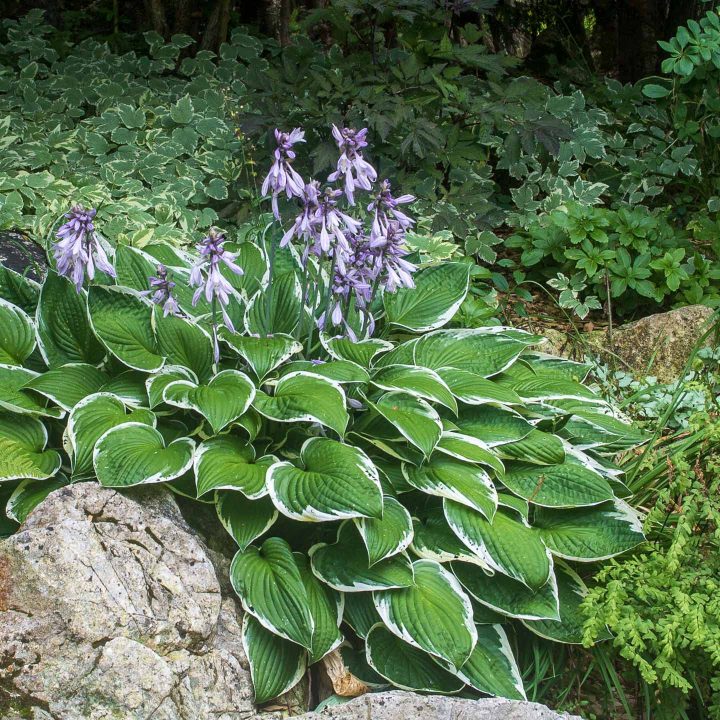
Most hostas bloom mauve or white in summer. Although some people cut off the blooms so they don't detract from the stunning leaves.
Learn more about Hostas:
13 | Japanese Anemone
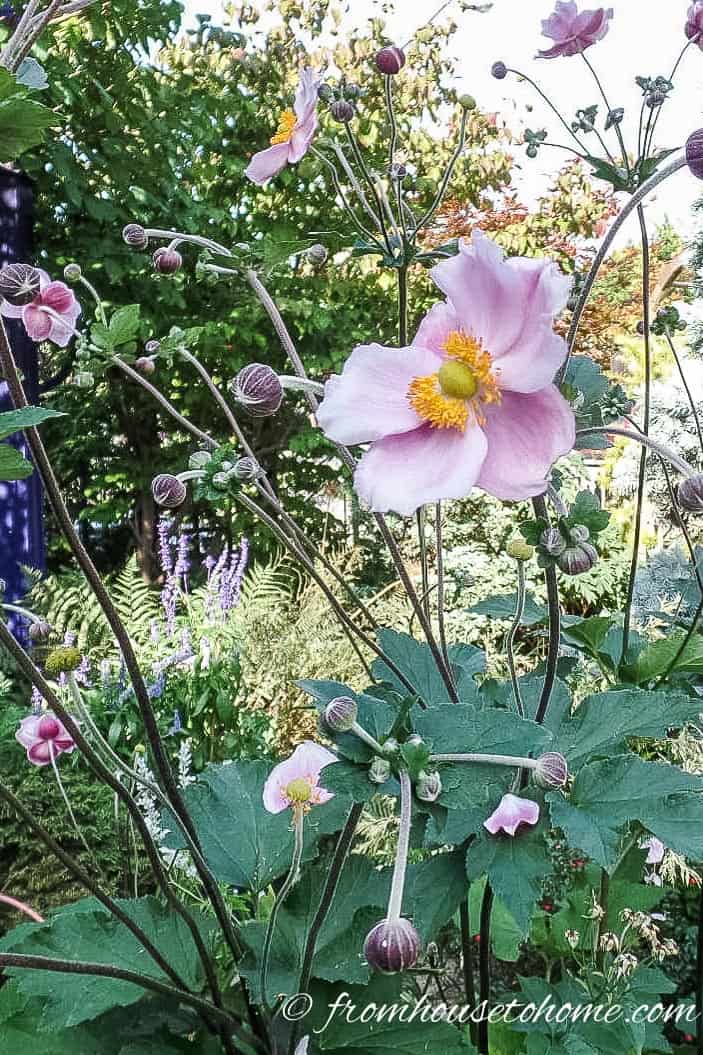
Zones: 3 to 9 (depending on the variety)
Bloom Time: Fall
Height: 36" to 60"
Spread: 36″ to 48"
Light: Part Shade To Shade
Japanese anemone is one of my favorite tall shade perennials for late summer/fall blooms.
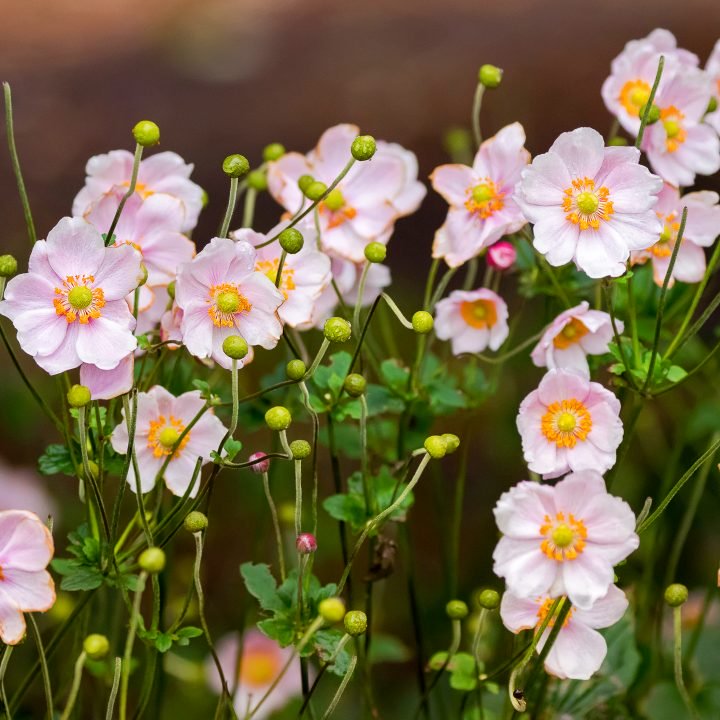
They have delicate pink or white flowers that sway in the late summer wind until frost. Pure joy in the autumn landscape!
For the best blooms, grow in any soil, in partial shade.
Hummingbirds are attracted to the flowers, but deer and rabbits are not.
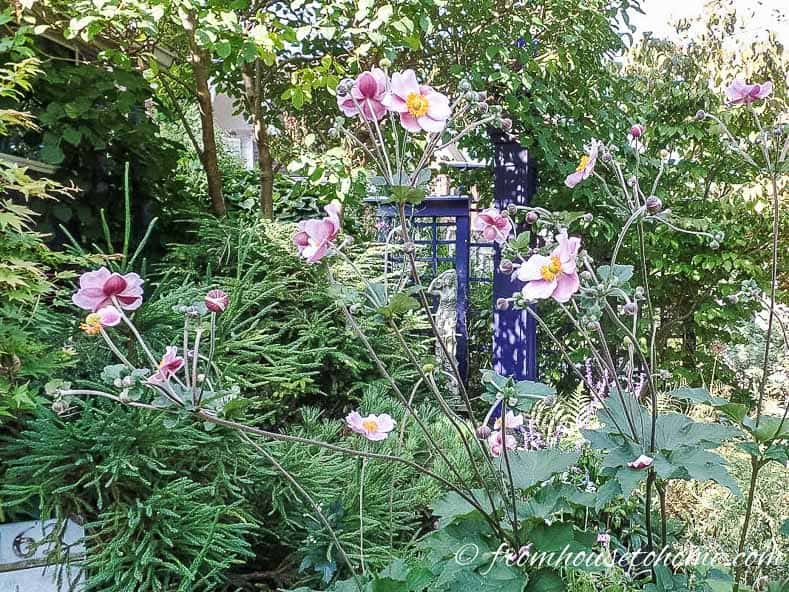
Japanese anemone is a late bloomer; so the plant stays dormant until late spring.
Because of this, I like to plant a fern peony beside it. The peony is fading by the time the anemone starts to sprout.
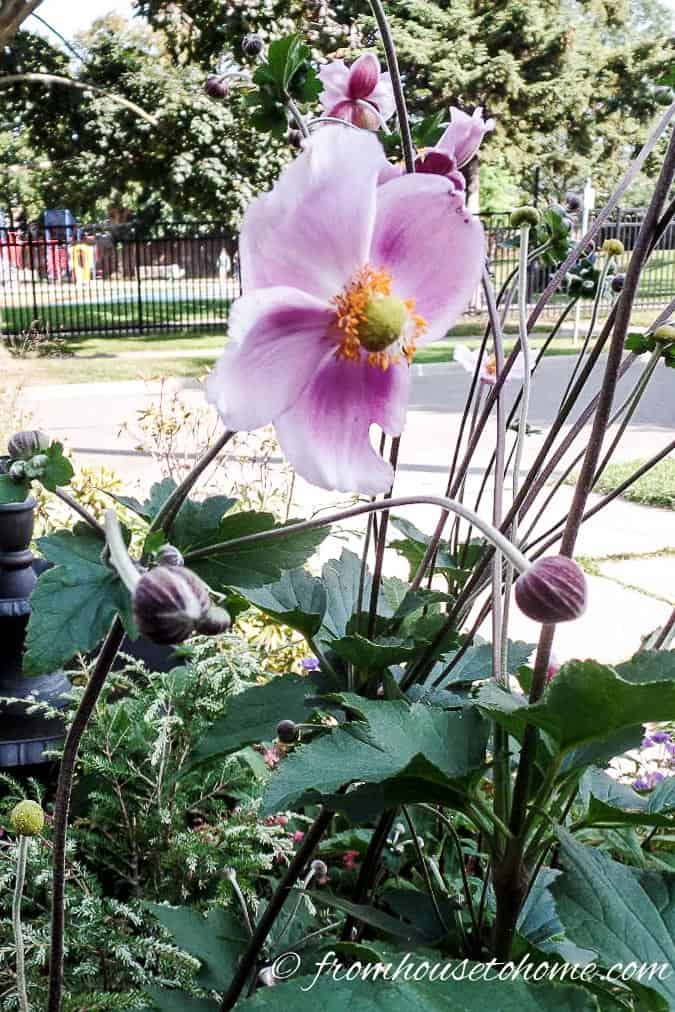
At 3' high, this plant may need staking But it always gets many appreciative comments from passersby.
These plants also spread by underground runners and can become invasive in some areas, so check with your local nursery before planting. Or grow them in an enclosed space like a large container or raised bed.
Learn more about growing Japanese Anemone HERE.
14 | Japanese Painted Fern
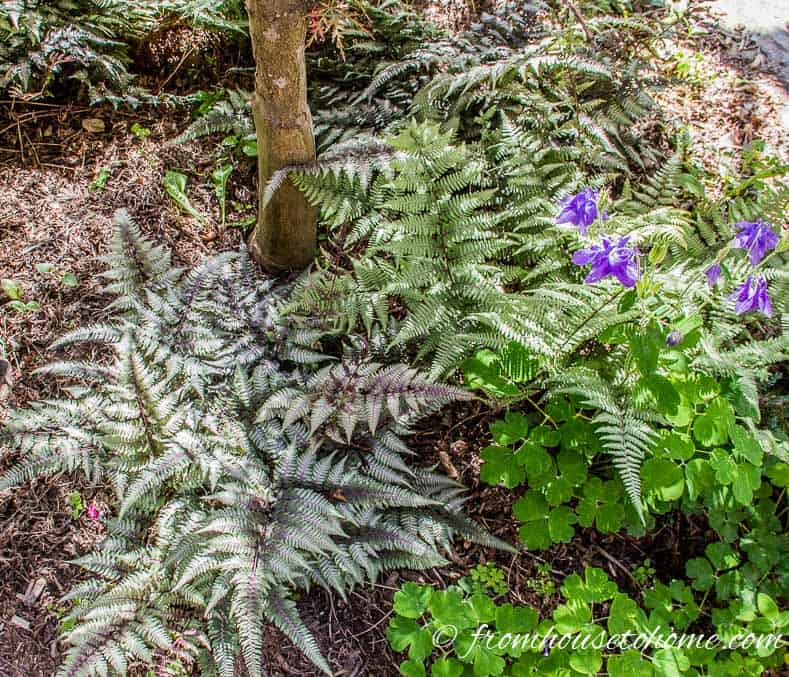
Zones: 4 to 9
Light: Shade to Part Shade
Bloom Time: Foliage Only
Height: 12" to 24" (depending on the variety)
Spread: 18" to 36"
Japanese painted ferns are a blessing to garden designers.
With their blue green leaves, burgundy variations, and compact growth habit they are an extremely interesting addition to any shade garden.
Like most ferns, these perennials don't like to dry out, so make sure to provide consistent water. Otherwise, they are very low maintenance plants.
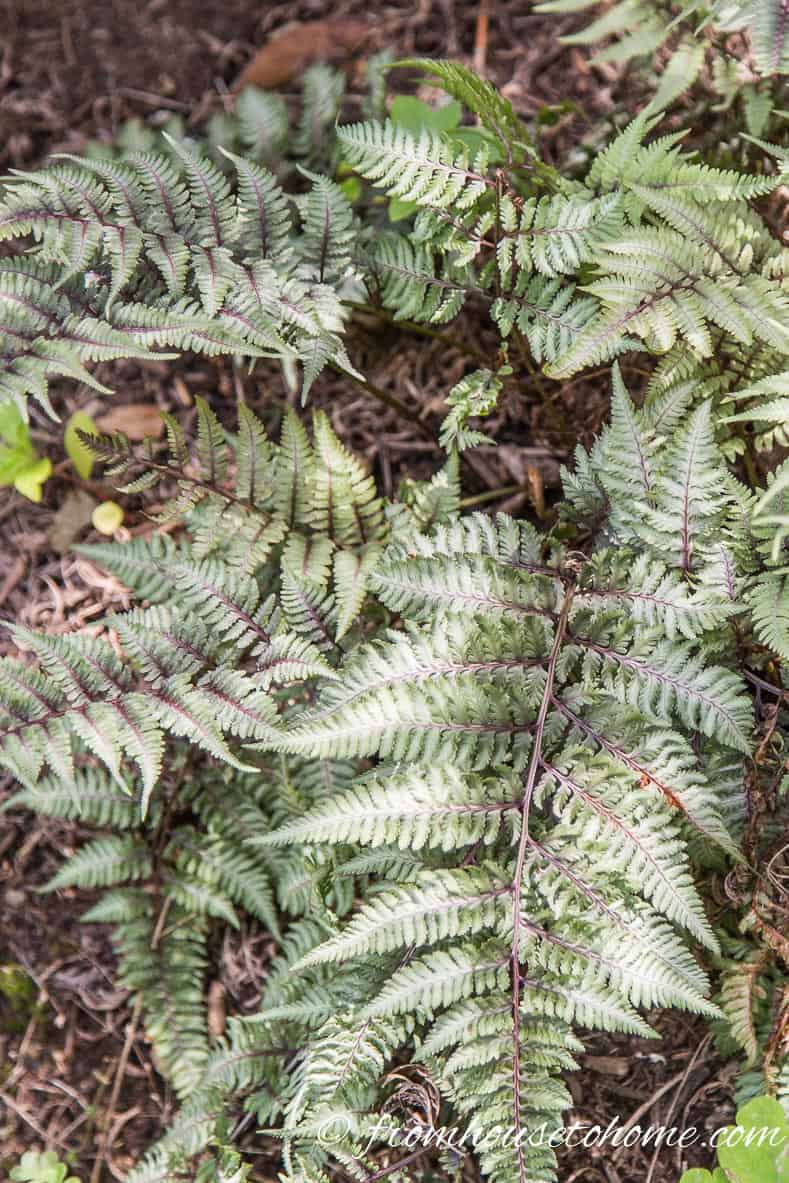
Variation “pictum” (find it HERE*) has burgundy stems and pewter colored leaves that reflect light.
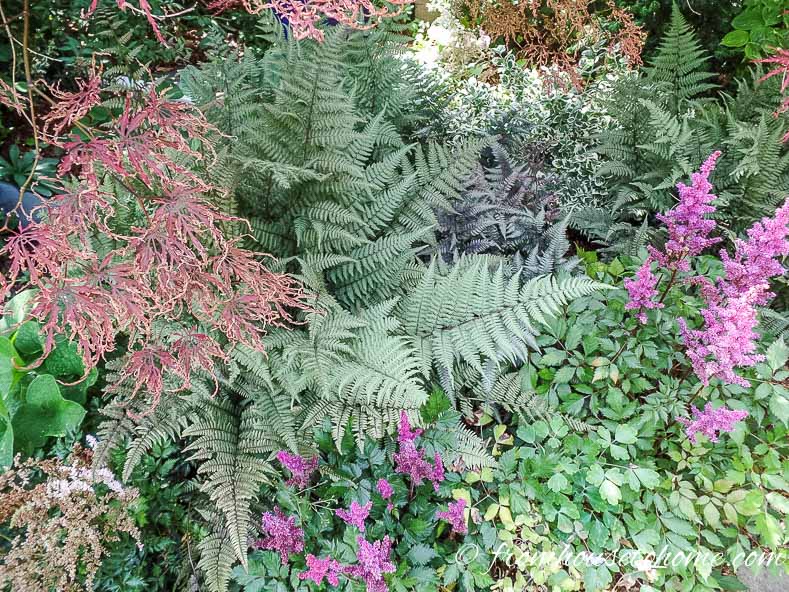
Whereas ‘ghost’ (find it HERE*) has silvery green fronds that brighten up a dark space.
Click HERE for more hardy fern varieties.
15 | Lenten Rose (Hellebore)
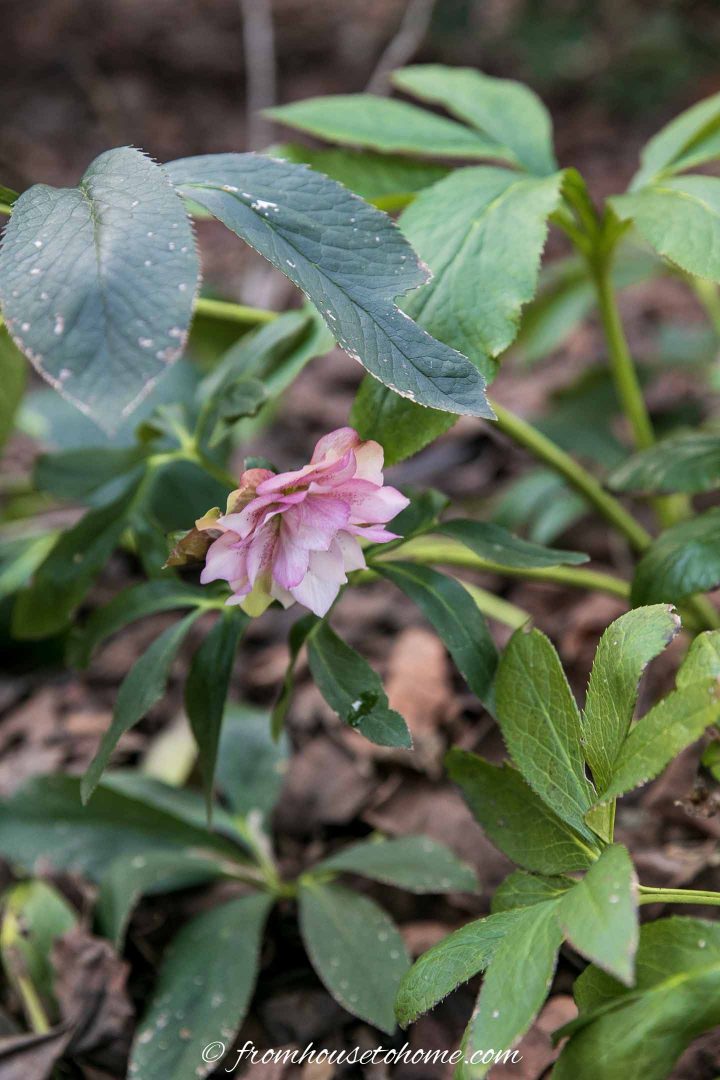
Zones: 4 to 9
Light: Shade
Bloom Time: Late Winter to Early Summer
Height: 12" to 18"
Spread: 18" to 24"
Hellebores are low-growing, clump-forming, evergreen perennials that start blooming in the winter, earning it the nickname 'Christmas rose'. Even in Canada, their flowers can be seen peeping out from the snow in February.
Once they start blooming, they have the added benefit that the blooms last for quite some time. In my South Carolina garden, the first flowers appear in January and are still going strong in April.
The only maintenance I do, is to tidy the appearance by removing any dead leaves.
The plants can be a little gangly in the summer. Planting them with something that comes out a little later and also likes the shade (like Hostas) will help provide some distraction.
Find more information about growing Hellebores HERE.
16 | Leopard Plant (Ligularia)
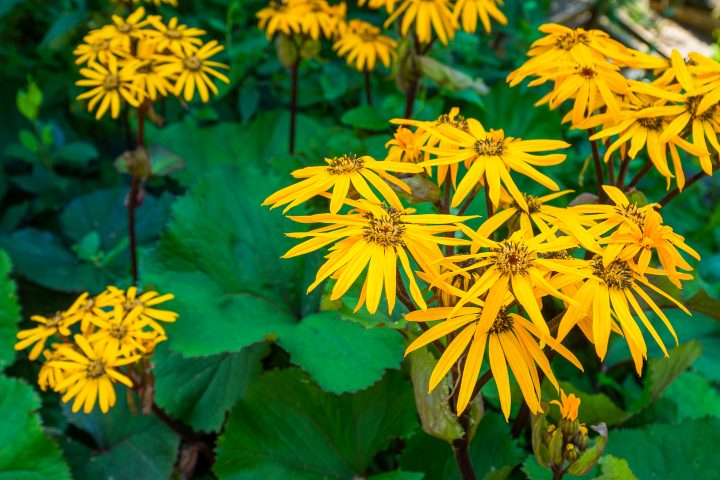
Zones: 3 to 9
Light: Shade
Bloom Time: Summer
Height: 24" to 48" (depending on the variety)
Spread: 24" to 36"
Ligularia dentata is a large-leafed perennial that likes heavy shade and wet soil. Do not let it dry out.
For a pop of bright color in your shade garden, this easy-to-grow flowering perennial is just the thing.
The only problems being that snails and slugs will eat the leaves. And it may temporarily wilt in the afternoon sun, only to recover at night. Which makes it best sited on the north side of the house.
Ligularia also attracts bees and butterflies and resists deer.
Totally stunning if you can keep it wet enough!
17 | Periwinkle (Vinca minor)
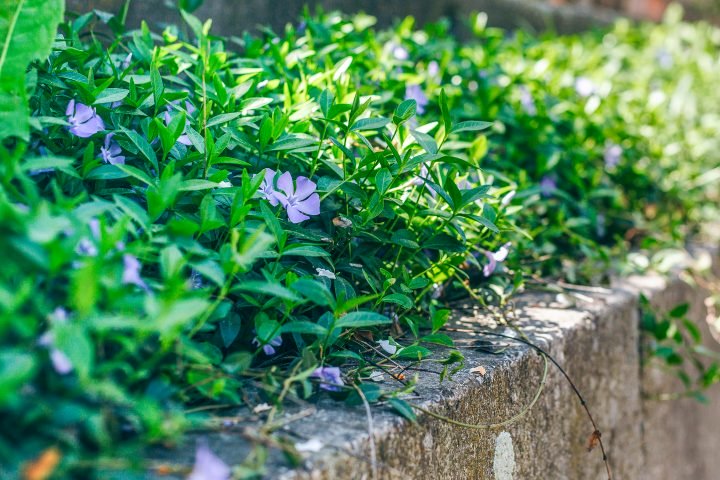
Zones: 4 to 8
Light: Shade
Bloom Time: Spring
Height: 4" to 8"
Spread: 24" or more
Periwinkle is a perennial with evergreen leaves and pretty, blue, or violet flowers in the spring.
It is tolerant of drought, shade, deer, and rocky, clay or sandy soils. A very tough plant!
Vinca spreads rapidly by rooting at the stem joints.
So although it is an attractive ground cover, it can be difficult to contain once established and can take over even in dry, total shade.
18 | Pink Muhly Grass (Muhlenbergia Capillaris)
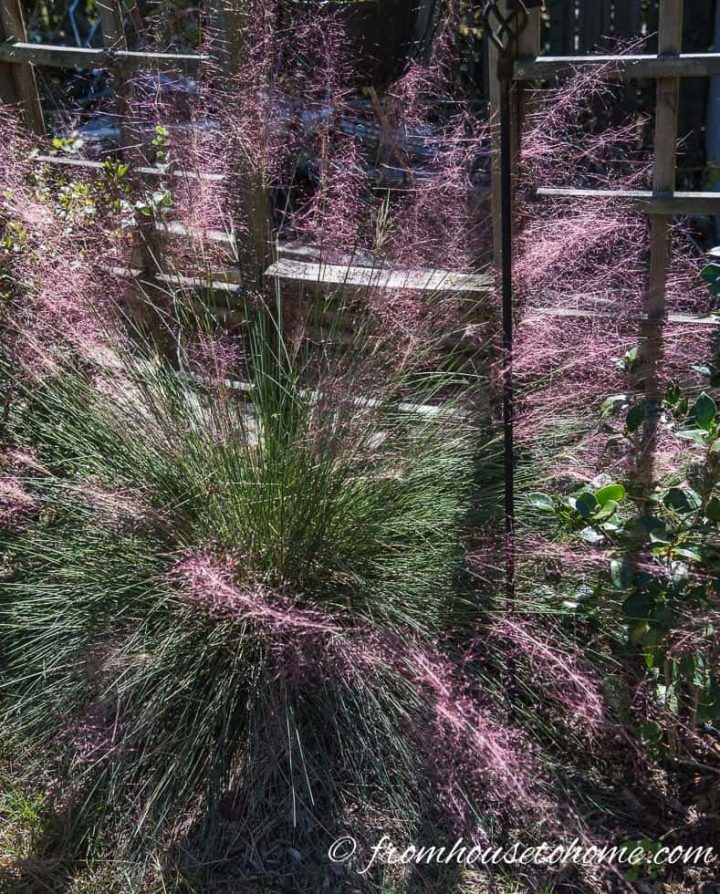
Zones: 5 - 9
Light: Full Sun
Bloom Time: Late Summer to Fall
Height: 3' to 4'
Spread: 3' to 4'
As you may have guessed from its name, Pink Muhly grass is known for its airy pink plumes that appear in late summer.
This native ornamental grass is deer-resistant, heat-tolerant and will survive in dry conditions once it is established.
So if you're looking for a low maintenance plant that loves the sun, this is a great option for your garden.
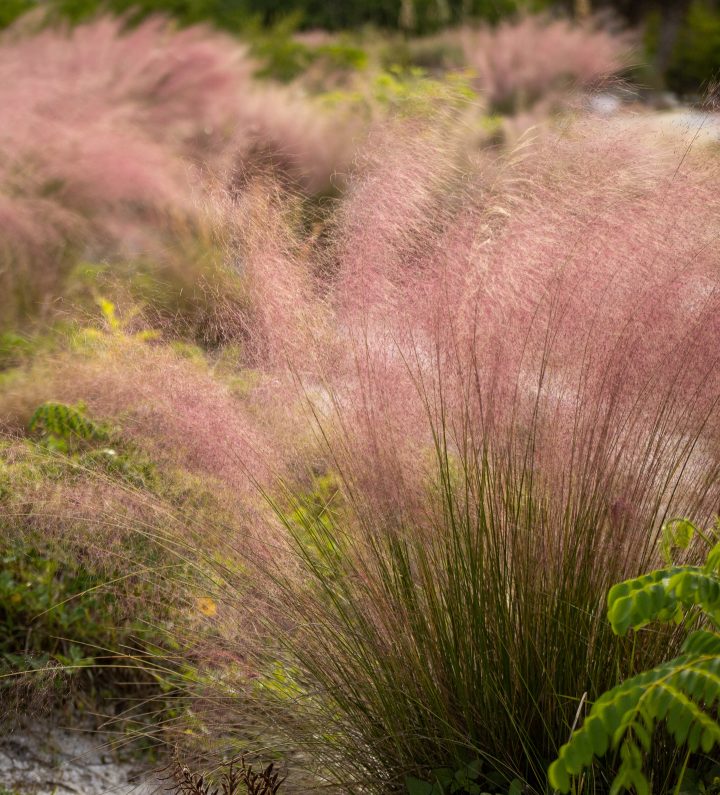
It's also not as big or as invasive as some of the other ornamental grasses, which makes it a great border plant.
19 | Rose Mallow (Perennial Hibiscus)
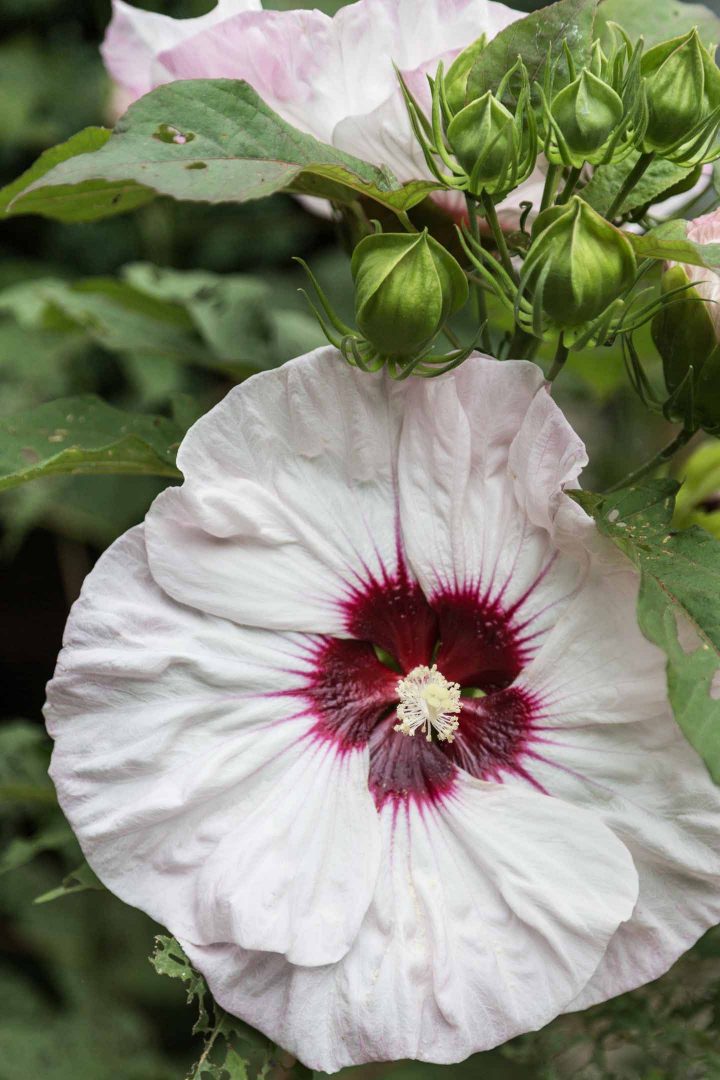
Zones: 4 to 9
Light: Sun
Bloom Time: Late Summer to Fall (earlier in the South)
Height: 3' to 5' (depending on the variety)
Spread: 3' to 5'
Hardy Hibiscus or Rose Mallow is a native perennial with HUGE blooms (up to 10 inches across!) that look tropical even though they're not.
It thrives in full sun and loves wet soil. So make sure it doesn't get too dried out.
Having said that, Rose Mallow is very adaptable to pretty much any other type of soil conditions - clay or sand, acidic or alkaline...it will grow well in any of them.
Bees, butterflies and hummingbirds love the brightly-colored flowers. Deer and rabbits do not.
Hardy Hibiscus grows on woody stems that look like branches but die down to the ground in the winter.
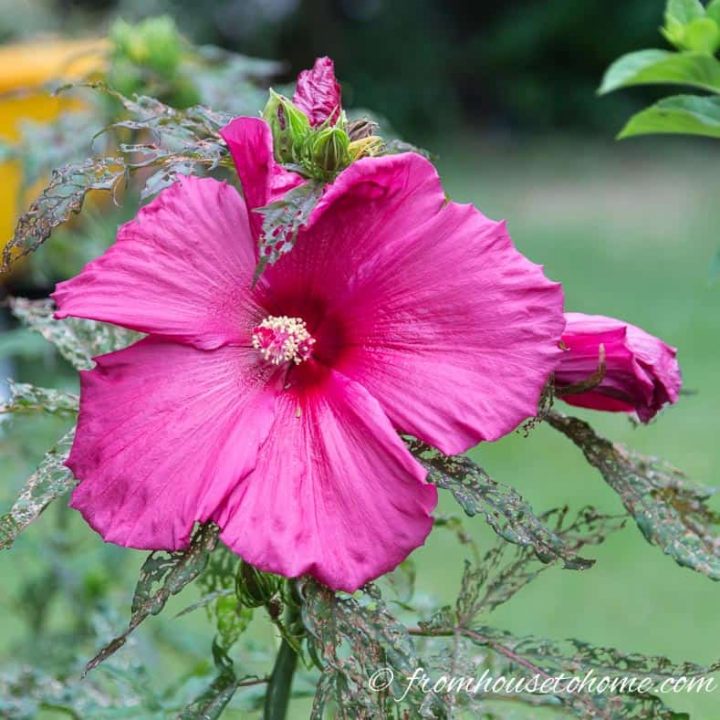
As you can see from this picture, it is susceptible to caterpillars which eat the leaves.
Although they don't seem to prevent the plant from growing, the big holes in the foliage don't look that great. Washing with an insecticidal soap helps to prevent this.
This is one of the last perennials to come up in the spring, so don't be worried if it seems like it's not coming back...it probably just needs a little more time.
20 | Russian Sage (Perovskia atriplicifolia)
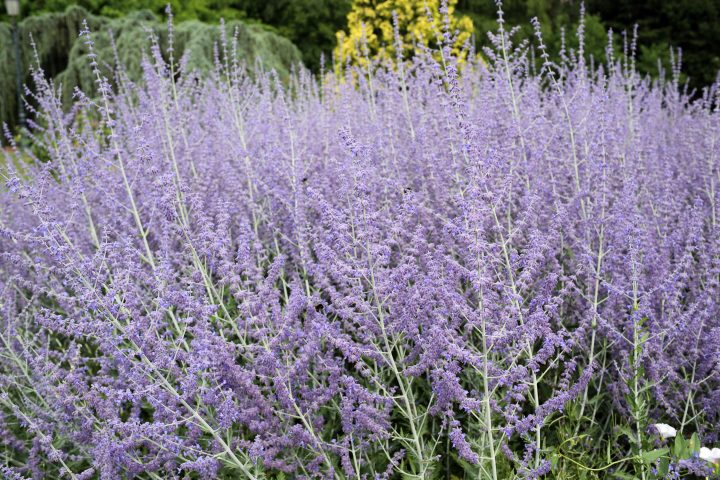
Zones: 4 to 9
Bloom Time: Early summer to fall
Height: 24" to 48"
Spread: 24" to 48"
With its gray-green foliage and beautiful purple-blue flowers, Russian Sage (Perovskia atriplicifolia) is one of my favorite full sun perennials.
This is an easy-to-grow plant with a really long bloom time that starts in the summer and continues well into fall.
It's deer resistant, drought tolerant, and it attracts bees, butterflies and hummingbirds.
Russian sage also requires absolutely no maintenance...no fertilizing, deadheading or dividing.
You can cut it shorter in the spring to control its size if you want to, but otherwise pruning is not necessary, either.
21 | Sedum
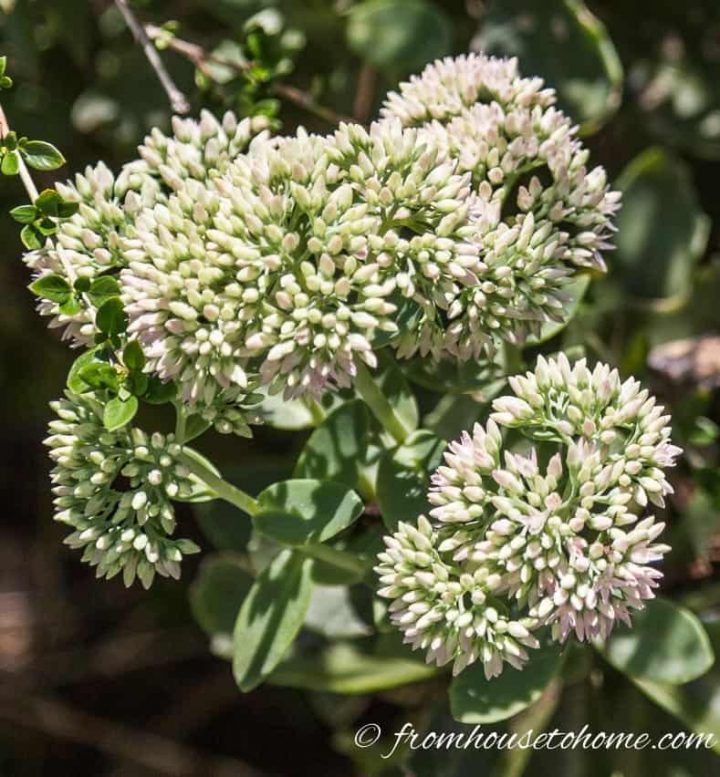
Zones: 3 to 9
Light: Sun
Bloom Time: Late summer to fall
Height: 6" to 24"
Spread: 18" to 24"
Sedums are succulents that have thick fleshy leaves and star shaped flowers in clusters that bloom in autumn.
They like dry, poorly-fertilized soil and actually prefer not to be watered too much. Which makes them perfect for growing in rock gardens, or in clay or sandy soil.
They are also deer and rabbit resistant.
Depending on the variety, Sedums can be grown as ground covers, on the edges of rock gardens or as a middle of the border plant.
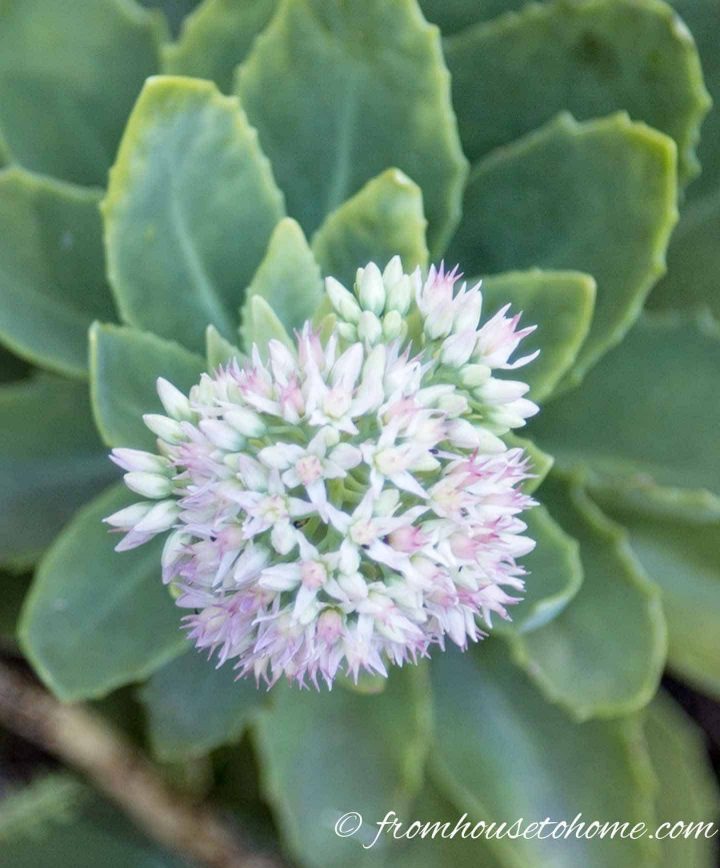
Sedum 'Autumn Joy' is an easy-to-grow variety with flowers that start out pink and turn to bronze as the weather gets cooler.
Since it is one of the last flowers to bloom before winter, it's a great late-season nectar source for butterflies and bees.
22 | Siberian Bugloss (Brunnera macrophylla)
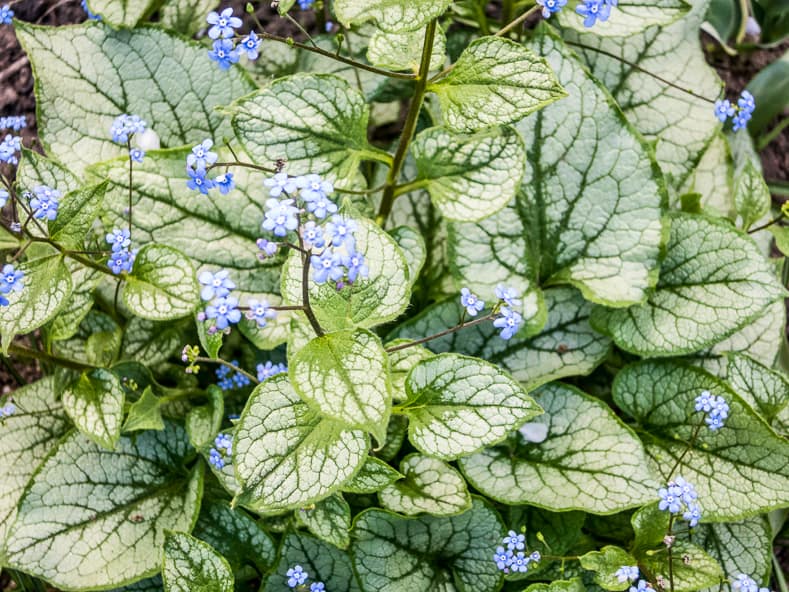
Zones: 3 to 8
Light: Part Shade to Shade
Bloom Time: Spring
Height: 12" to 15"
Spread: 12" to 24"
Brunnera macrophyla is a low-growing perennial that has pretty blue blooms in the spring, and also has beautiful foliage.
If it is kept consistently moist, Siberian Bugloss rewards with a lovely mounded plant that fairly glows in the shaded environment, especially if you have one of the varieties with silver leaves.
In warmer climates, the foliage is evergreen so it will add some much needed color to your winter garden.
Even in cooler climates, the foliage should be left in place to protect the crown over winter and trimmed it back in the spring.
These plants prefer cooler summers, and generally will not perform well in the hot and humid summer conditions of the South.
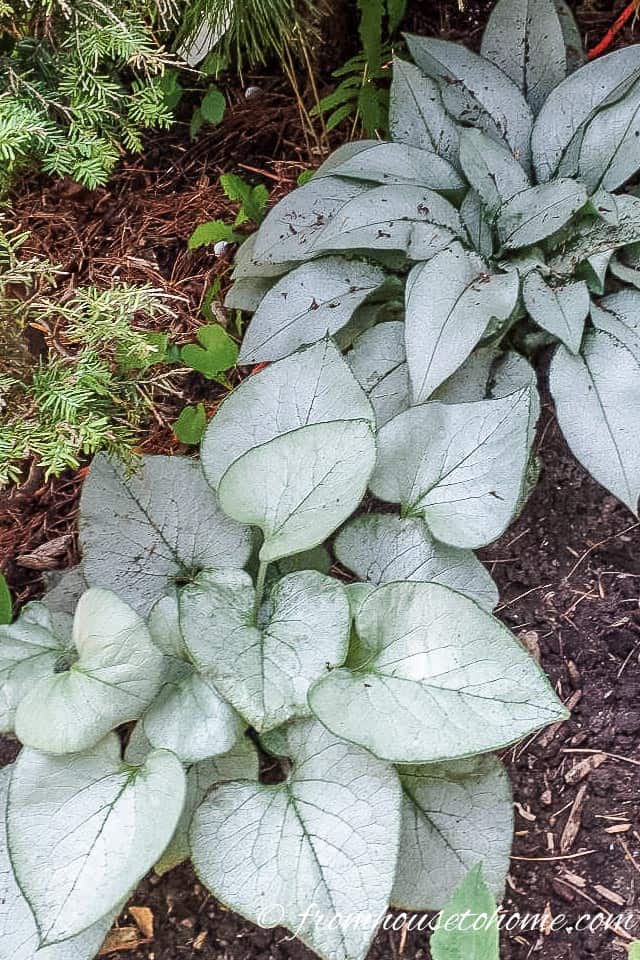
One of my favorite varieties is 'Jack Frost' Brunnera which has gorgeous large, variegated, silver heart-shaped leaves, and sports dainty blue flowers in the spring.
23 | Spider Lily (Lycoris)

Zones: 5 to 10
Light: Full Sun / Part Shade
Height: 12" to 24"
Spread: 6" to 8"
Bloom Time: Late summer
Flower Color: Red, yellow, white, pink
Spider Lilies are fragrant, deer resistant, drought tolerant bulbs that have red, yellow, white or pink flowers.
The beautiful blooms pop out of the ground in late summer with no foliage and last for about 2 weeks.
Once the plants have finished flowering, the leaves appear in late fall and stay in the garden until late spring when they die back.
Plant the bulbs 5" deep and 8" apart in their forever home. Spider Lilies don't like to be transplanted.
They will multiply over time and should be dug up and divided every few years.
24 | Starflower (Ipheion uniflorum)
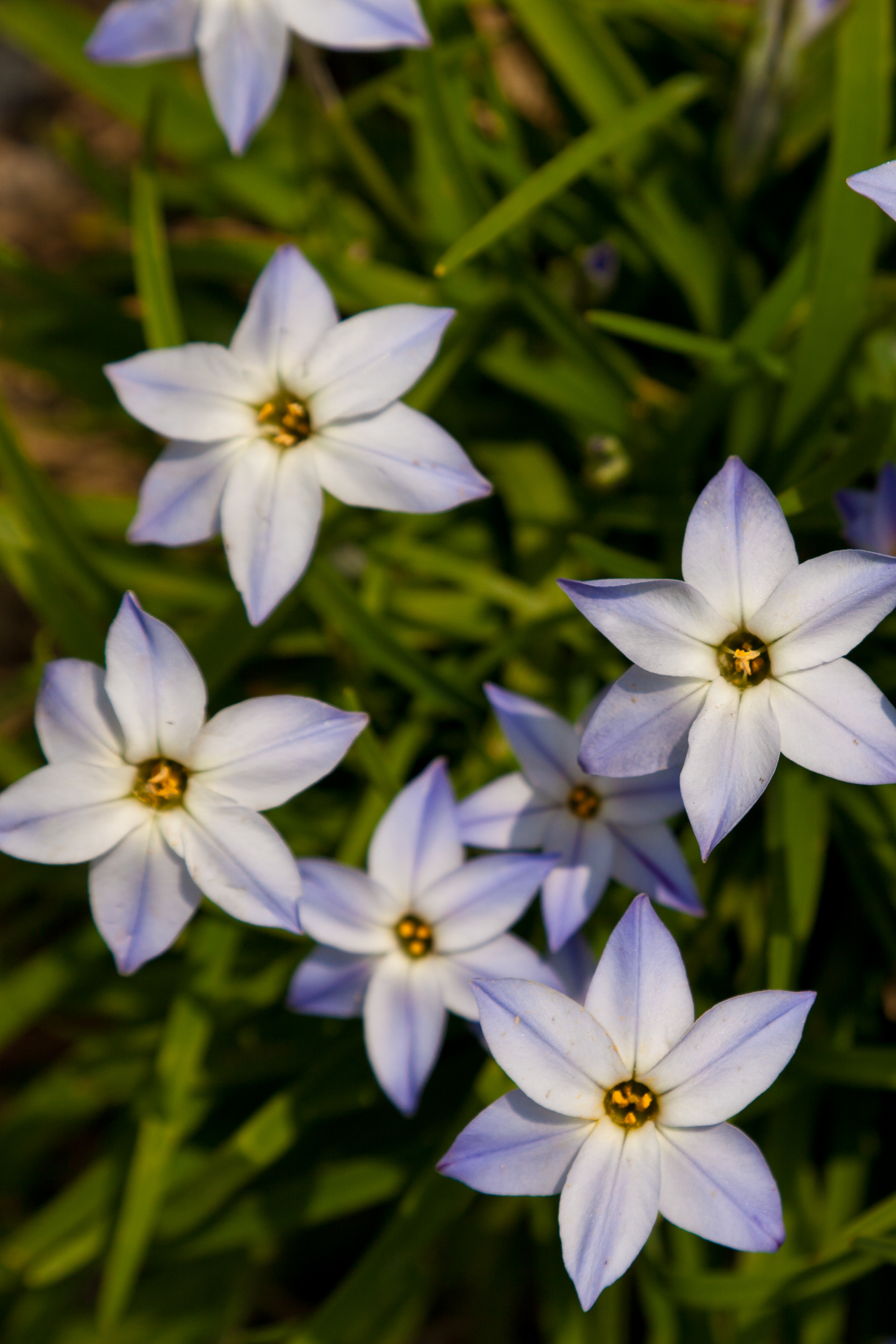
Zones: 5 to 9
Light: Full Sun / Part Shade
Height: 4" to 6"
Spread: 2"
Bloom Time: Spring
Flower Color: Purple, blue, white, yellow
Starflowers are spring-blooming bulbs that have purple, white or yellow star-shaped flowers and narrow grass-like leaves.
They grow 4" to 6" tall, are deer-resistant and grow well under trees.
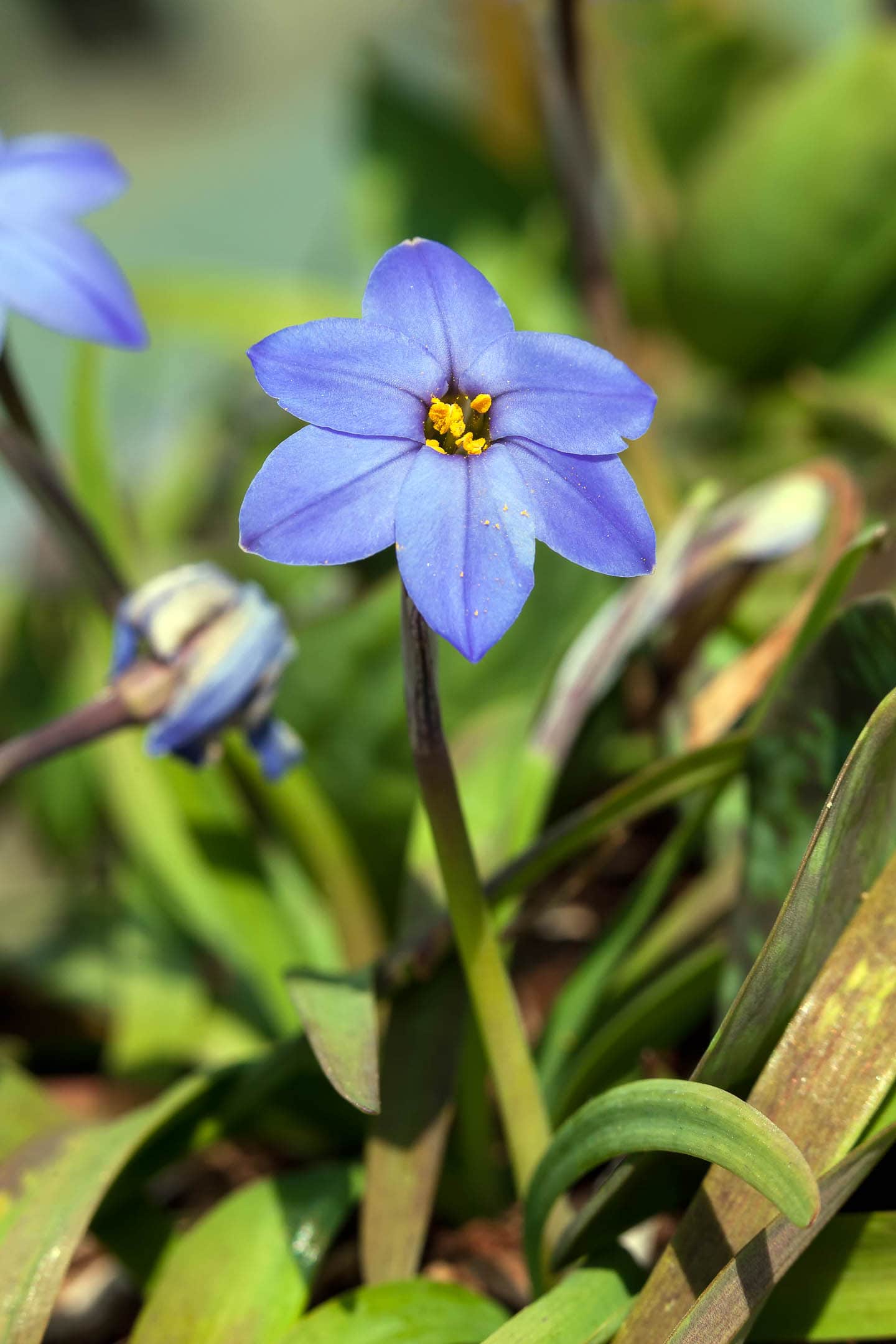
Starflowers naturalize easily and look beautiful with mid-spring daffodils and tulips.
Plant the bulbs 3" deep and 2" to 3" apart.
25 | Toad Lily (Tricyrtis hirta)
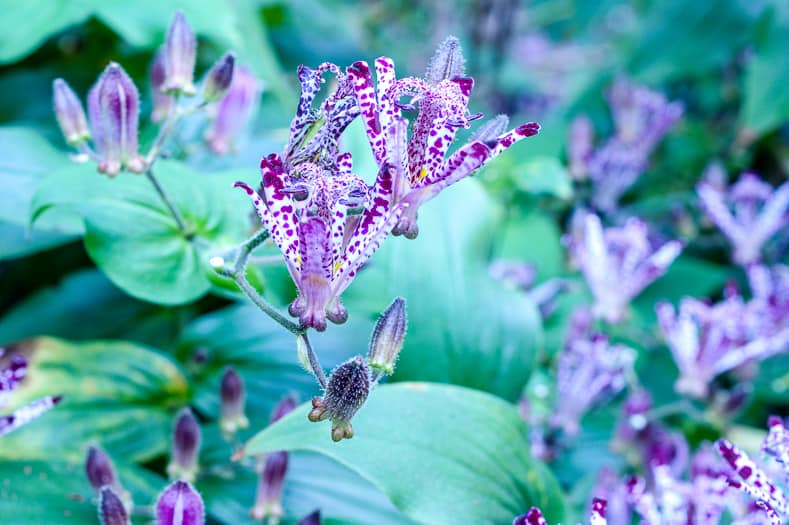
Zones: 4 to 8
Light: Shade to Part Shade
Height: 18" to 24"
Spread: 18" to 24"
Bloom Time: Late Summer To Fall
Flower Color: Purple, blue, yellow, white, maroon, pink
Toad lilies are somewhat unusual looking perennial plants that love the shade and bloom in the late summer and fall.
The orchid-like flowers and the leaves are often spotted in interesting combinations of white, purple, pink, yellow, maroon and blue.
This perennial should be sited in dappled sun-light, sheltered from winds, and grown near pathways so its flowers can be seen and appreciated. Although they can be grown in a wide range of climates, they thrive in zones 5 to 7.
A member of the lily family, toad lilies come from Asia, where they grow on the banks of streams so keep them moist for best performance and height.
These plants put on a show in the late summer and fall when many other plants are fading. And their flowers are much prettier than the name suggests!
Although it can be a little tricky to get started, once it's established this is a very low maintenance perennial.
It is deer resistant but rabbits will eat the leaves of some varieties.
There are a myriad of cultivars to choose from (If you're interested, you can find an in depth description here).
My Favorite Varieties
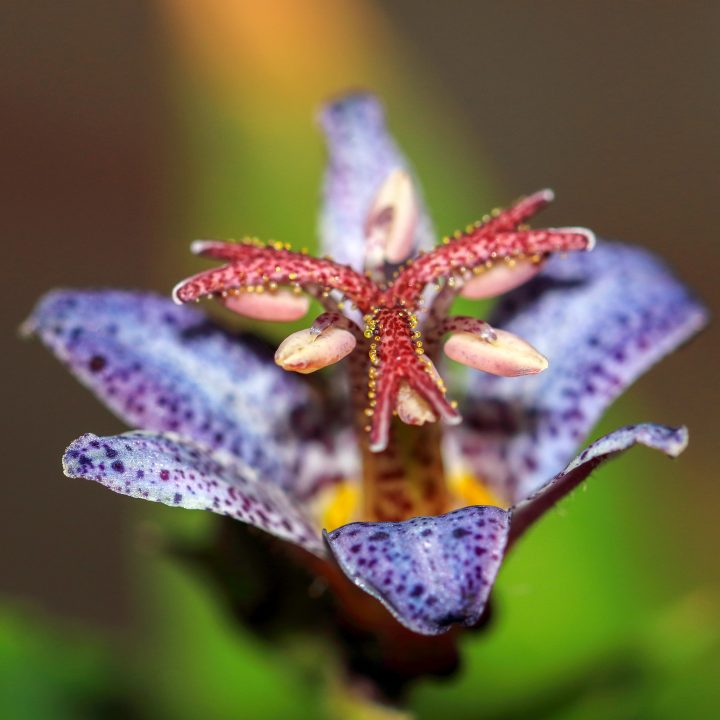
T. hirta 'Blue Wonder' - pictured above (Zone 4 - 8): Delicate star-shaped flowers that are white with bluish/purple spots from late summer through fall. Grows to 24" high. Buy it HERE.
Or try a whole collection of toad lilies for a multi-color garden (Zone 5 to 9): Get it HERE.*
T. hirta 'Raspberry Mousse' (Zone 5 - 9): Rich red-purple blooms on slender stems that will be a show stopper in your shade garden. Find it HERE.*
26 | Windflower (Anemone sylvestris)
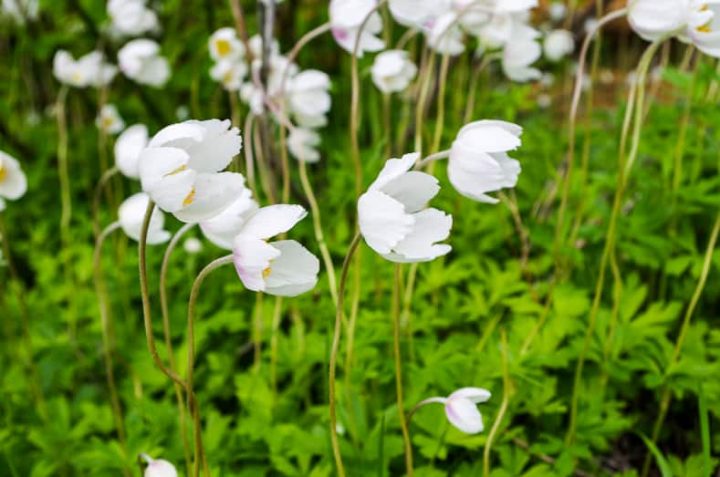
Zones: 2 to 9
Light: Sun to Part Shade
Height: 12" to 18"
Spread: 12" to 24"
Bloom Time: Late spring to early summer
Flower Color: White
Windflower (or Snowdrop Anemone) have pretty white flowers over ferny foliage that bloom in late spring and may re-bloom in the early fall.
They are great to plant with tulips and daffodils as the blooms and foliage will distract from the dying bulb leaves.
These anemones will spread so make sure to plant them where they have room to do so.
Hopefully you've found some perennials that will work for your garden!
Other perennials you might like
- The best ground cover perennials for shade
- Perennials for dry shade gardens
- Bushes to plant under trees
Do you have other suggestions for perennials that thrive in clay soil? Tell us in the section below.
This post was originally published on August 7, 2020 but was updated with new content on November 23, 2024.



























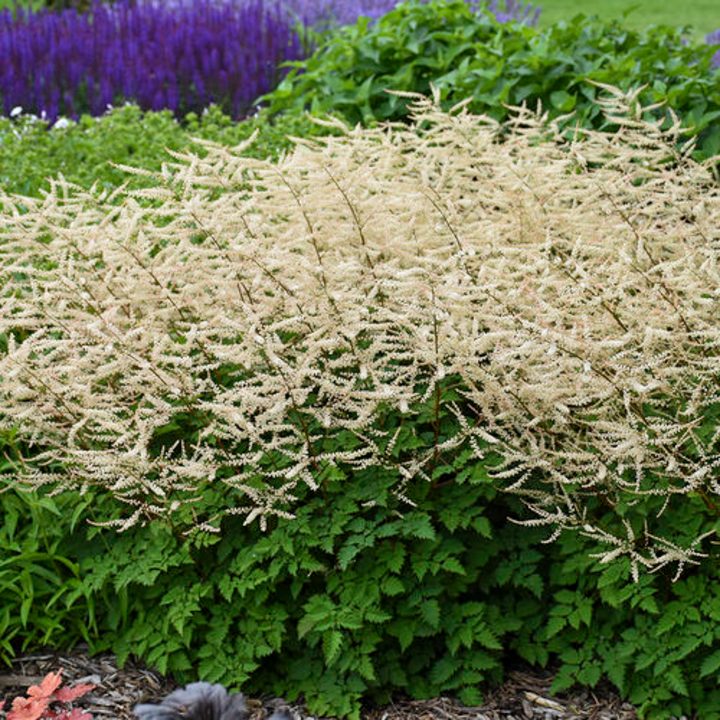
There was no recommended place to buy the beebalm. I have tried unsuccessfully to grow them. I would love some recommended places to buy some to try again.
Hi Donna…For larger, good-quality plants, try Nature Hills Nursery (HERE). For smaller ones (that are less expensive), Wayside Gardens (HERE) is another good option. Hope that helps!